Sage green’s muted, calming presence makes it the perfect hue for a living room that feels both fresh and timeless. Across top design publications, this versatile shade appears on walls, furniture, and accents, often paired with natural materials, metallic finishes, and complementary neutrals to create harmonious spaces. Whether you favor a minimalist Scandinavian aesthetic or a maximalist bohemian haven, sage green adapts, adding depth without overwhelming. Below are 20 inspired ideas—drawn from leading sources—to help you craft a serene, stylish living room that embraces the gentle strength of sage green.
1. Sage Green Accent Walls

Transform a single wall into the room’s focal point by painting it in a soft sage tone. This approach frames seating areas or media consoles, creating visual interest without committing the entire space to color. Accent walls in sage green amplify natural light, providing a soothing backdrop for artwork or floating shelves, and pair effortlessly with cream or beige furnishings for a balanced look.
2. Natural Wood and Sage Green Pairing
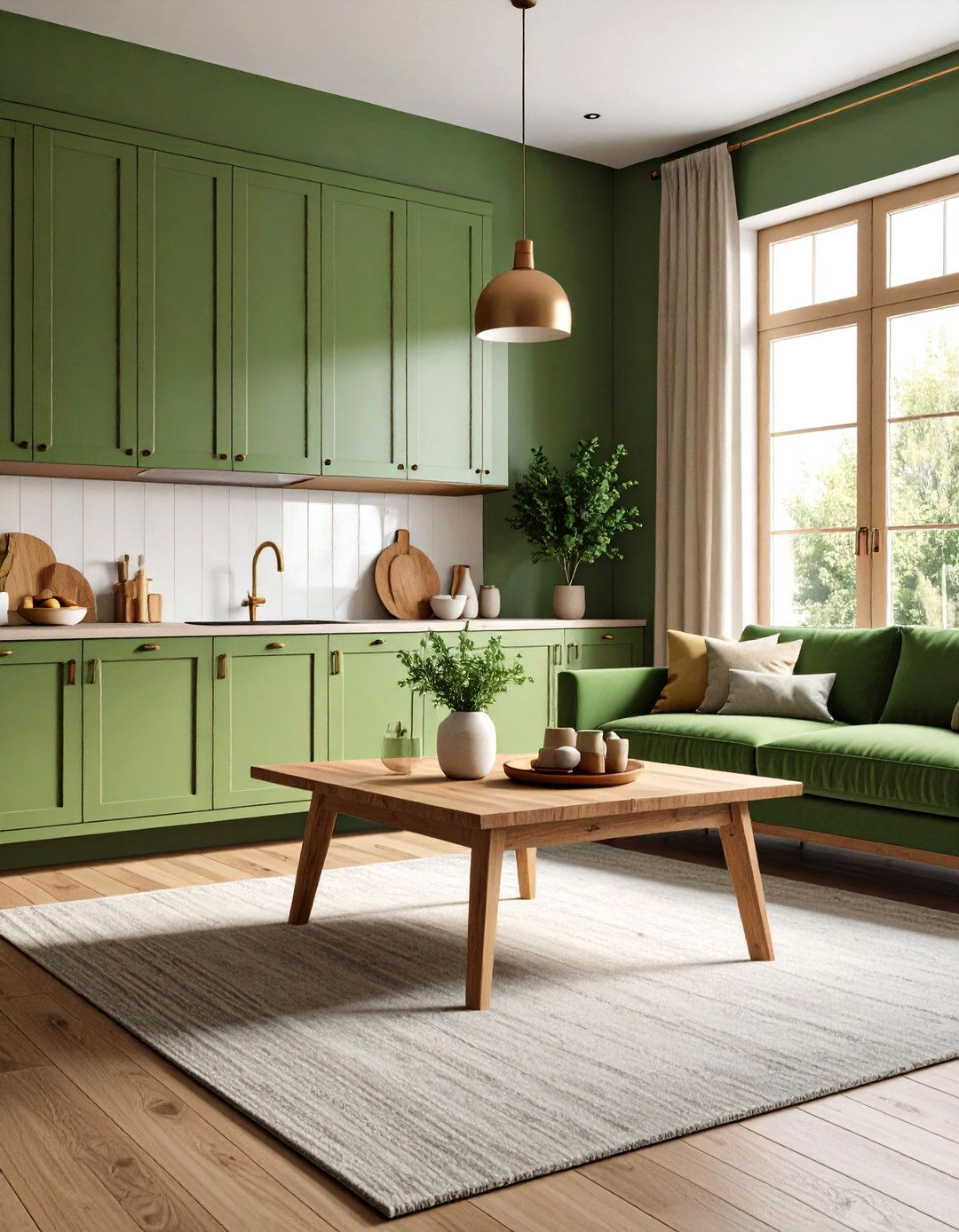
Pair sage green-painted trim or cabinetry with natural wood finishes—think oak coffee tables or walnut media units—for an organic, grounded vibe. The warmth of wood complements sage’s cool undertones, evoking a retreat-like ambiance. This combo works beautifully in both modern and rustic schemes, enhancing textures and bringing a handcrafted feel to the living room.
3. Gold and Brass Accents with Sage Green

Introduce metallic accents—such as brass light fixtures, gold-framed mirrors, or gilded side tables—to warm up sage green’s grayish hues. These finishes reflect light, adding subtle glamour and counterbalancing the color’s coolness. A statement chandelier or a cluster of brass wall sconces can elevate the overall sophistication of the space.
4. Sage Green Built-Ins and Molding
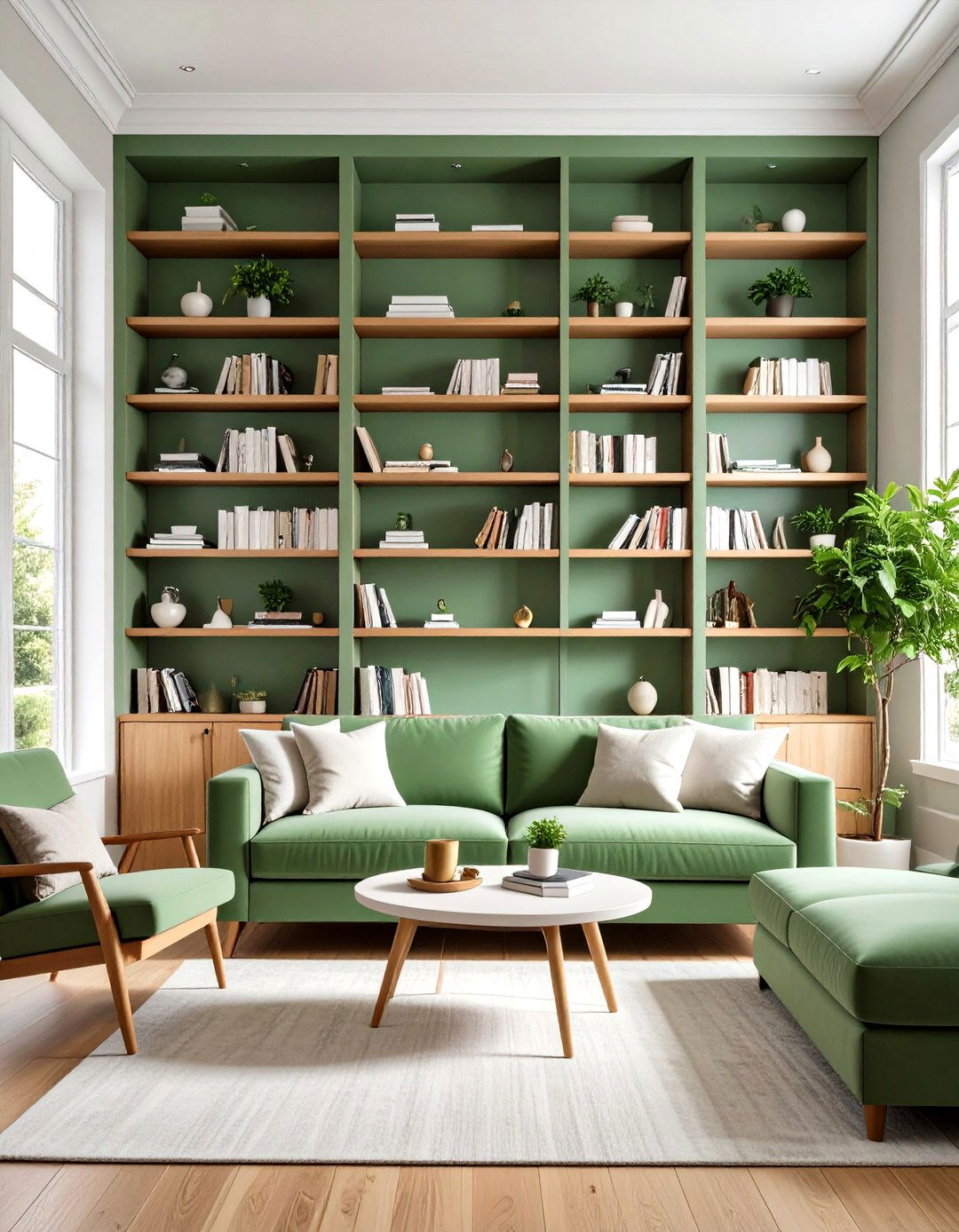
Extend sage green beyond walls by painting built-in bookshelves, window shutters, or decorative molding. This seamless treatment highlights architectural details and creates a cohesive, enveloping feel. Incorporating sage green into woodwork also protects and conceals wear, making it both a practical and aesthetic choice.
5. Botanical Prints and Sage Green Backdrop
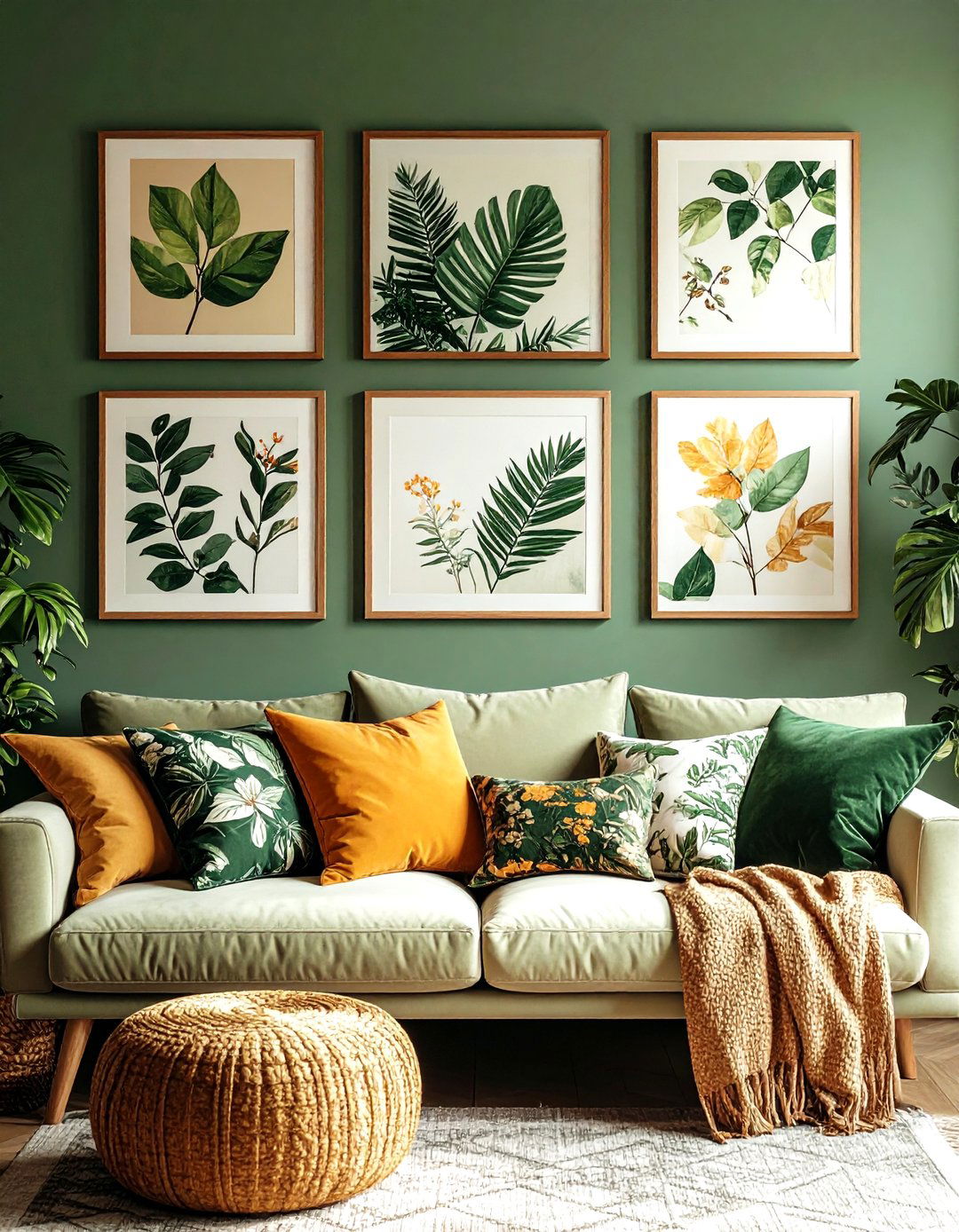
Use botanical or William Morris–inspired wallpaper on one wall against sage green paint on the rest. The patterns echo nature’s serenity, and the green backdrop unifies the scheme. Framed floral art and leaf-print throw pillows enhance this garden-like retreat, bringing layers of interest.
6. Minimalist Scandinavian Sage Green Living Room

Embrace Scandinavian minimalism by combining sage green walls with clean-lined furniture, light oak flooring, and white textiles. Keep accessories to a minimum—opt for a single abstract print or a sculptural vase—to let the color and form speak. This approach highlights simplicity and functionality while maintaining warmth.
7. Bohemian Sage Green Oasis
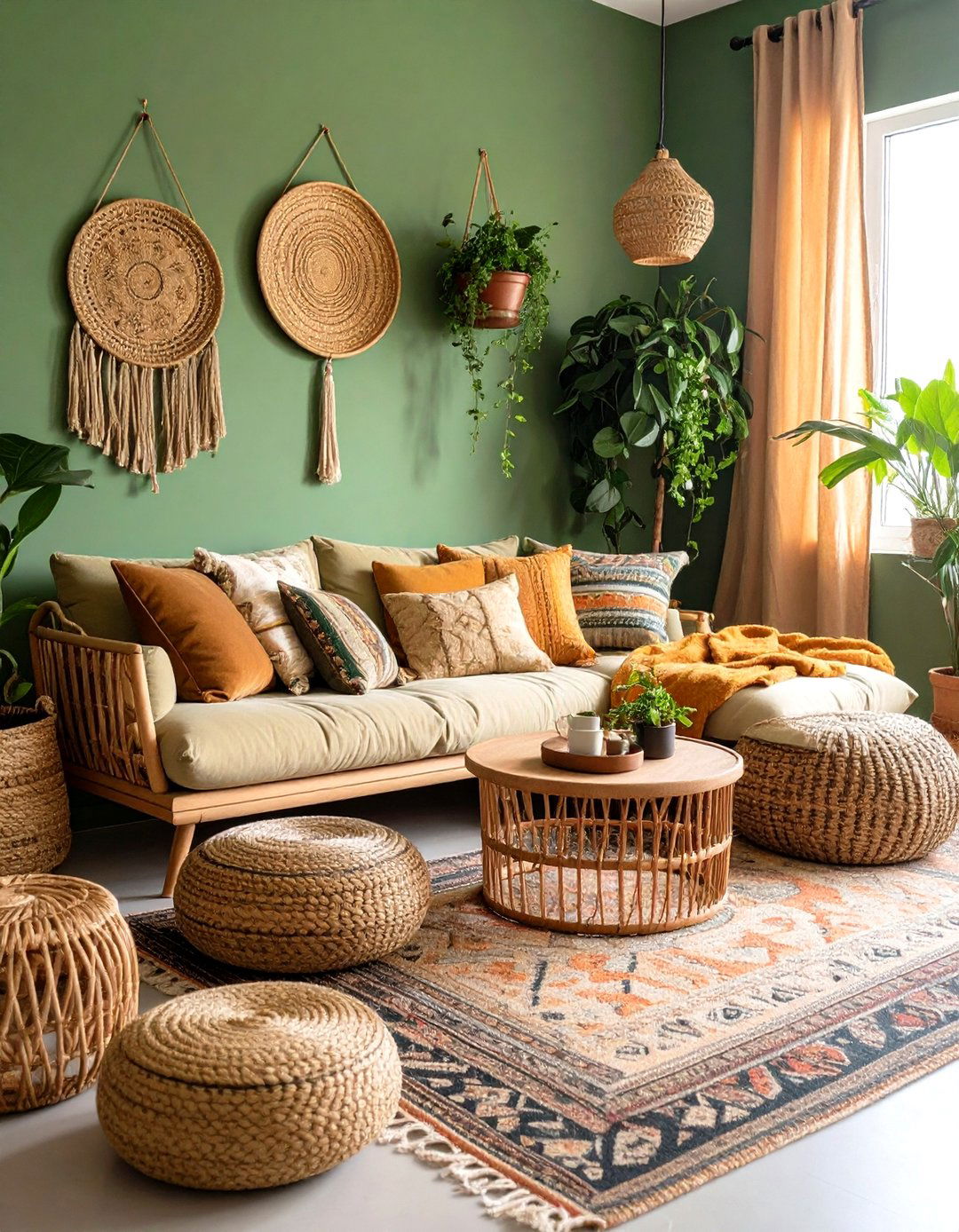
Layer rugs, pillows, and throws in mixed patterns—think ikat, kilim, or Moroccan motifs—over sage green upholstery or painted walls. Add macramé wall hangings, rattan furniture, and an array of houseplants for a relaxed, eclectic vibe. The muted green anchors the boho layers, preventing the look from feeling chaotic.
8. Sage Green and Leather Contrast
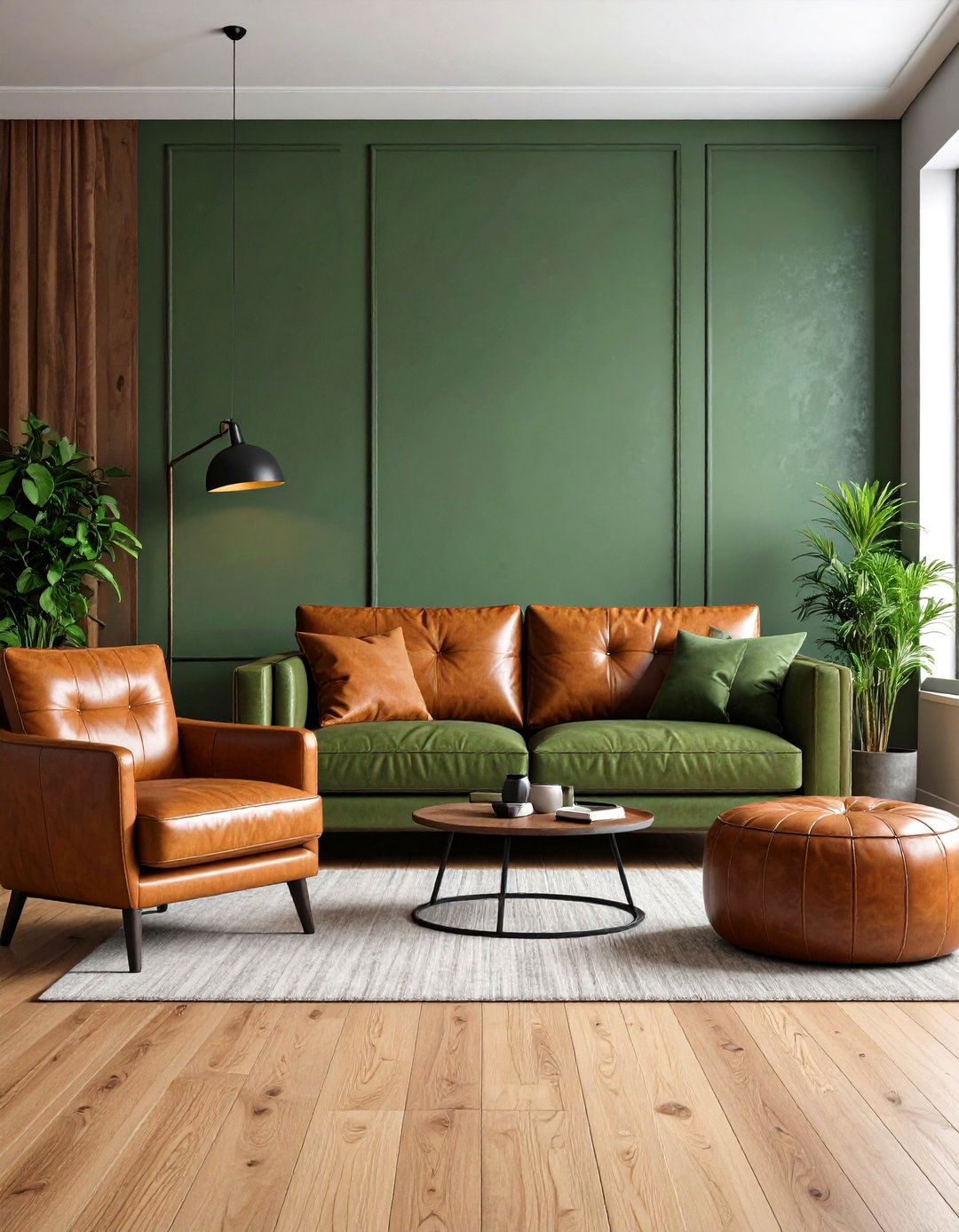
Pair a sage green sofa or accent chairs with leather elements—such as a cognac-toned armchair or a distressed leather pouf. The rich patina of leather injects warmth and texture, balancing the softness of green fabrics and creating a refined juxtaposition.
9. Sage Green with Neutral Linens
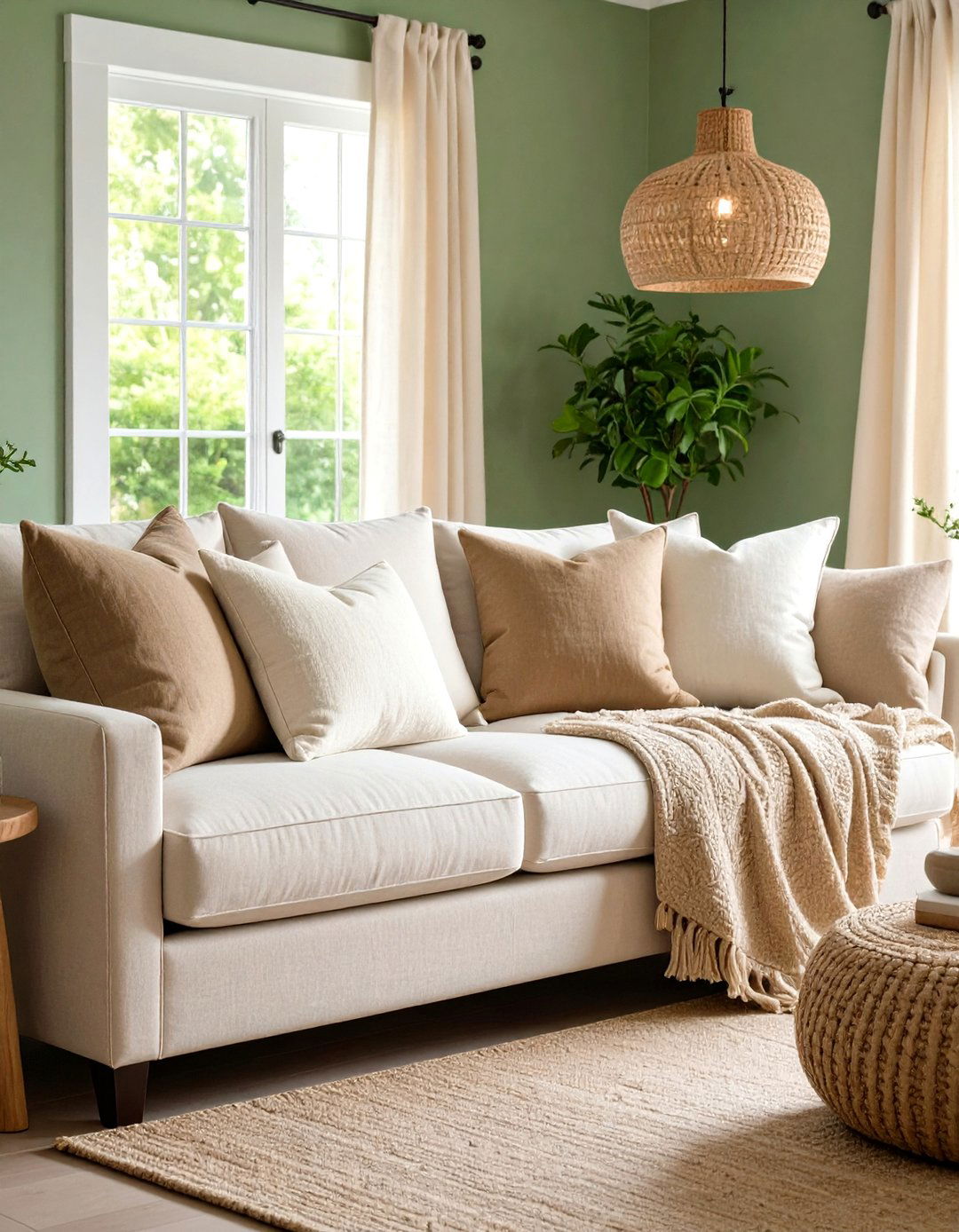
Drape linen slipcovers, curtains, and throw pillows in shades of ivory, taupe, or soft gray against sage green walls or upholstery. The neutral linens introduce a light, breezy feel, perfect for coastal or farmhouse-inspired interiors, while ensuring the green remains the star.
10. Modern Monochrome Sage Green Scheme
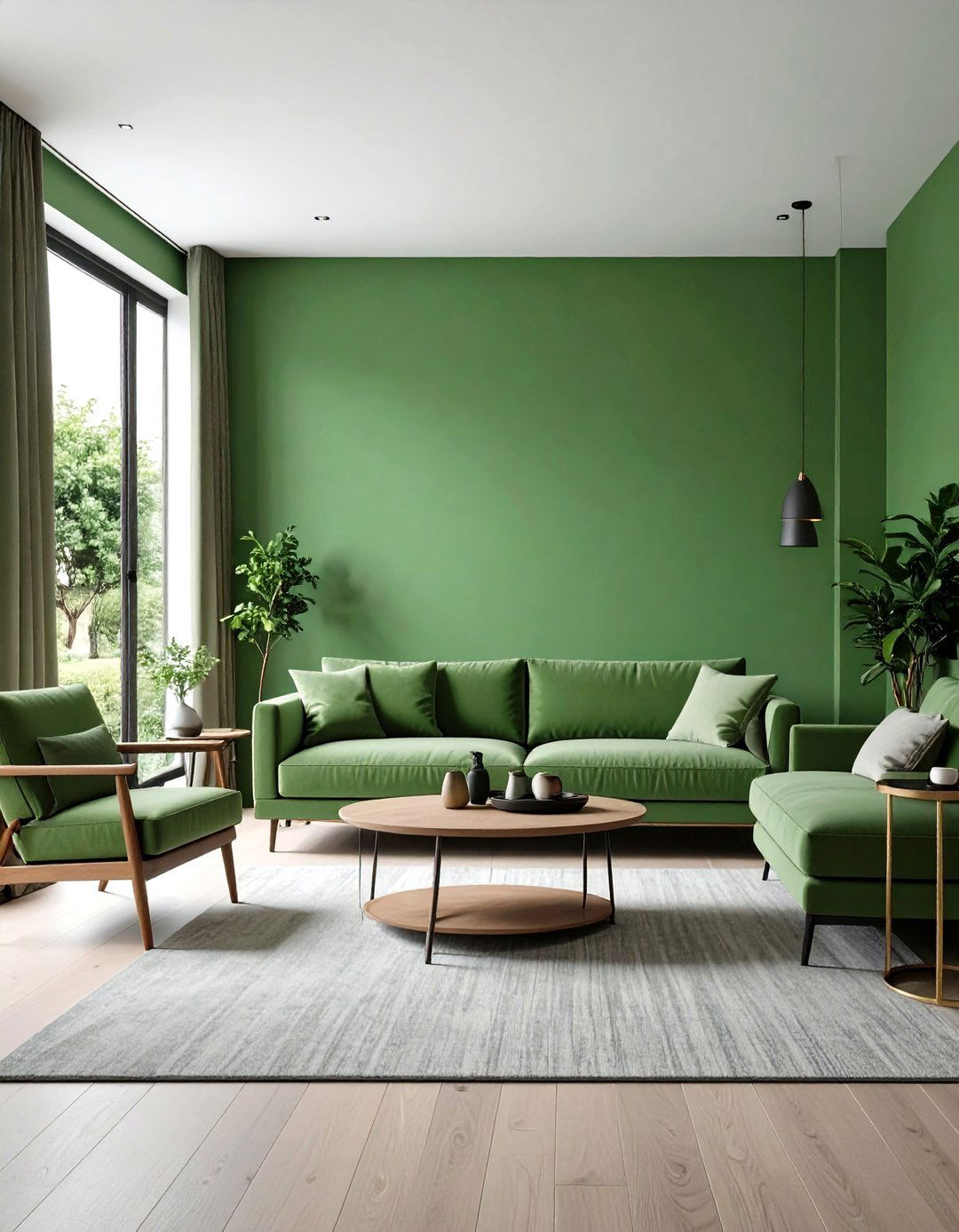
For a bold statement, go full monochrome—walls, furniture, and decor all in varying shades of sage. Mix matte and glossy finishes, and introduce subtle pattern through textiles. This tonal layering creates depth and drama without deviating from the core palette.
11. Sage Green Color Blocking
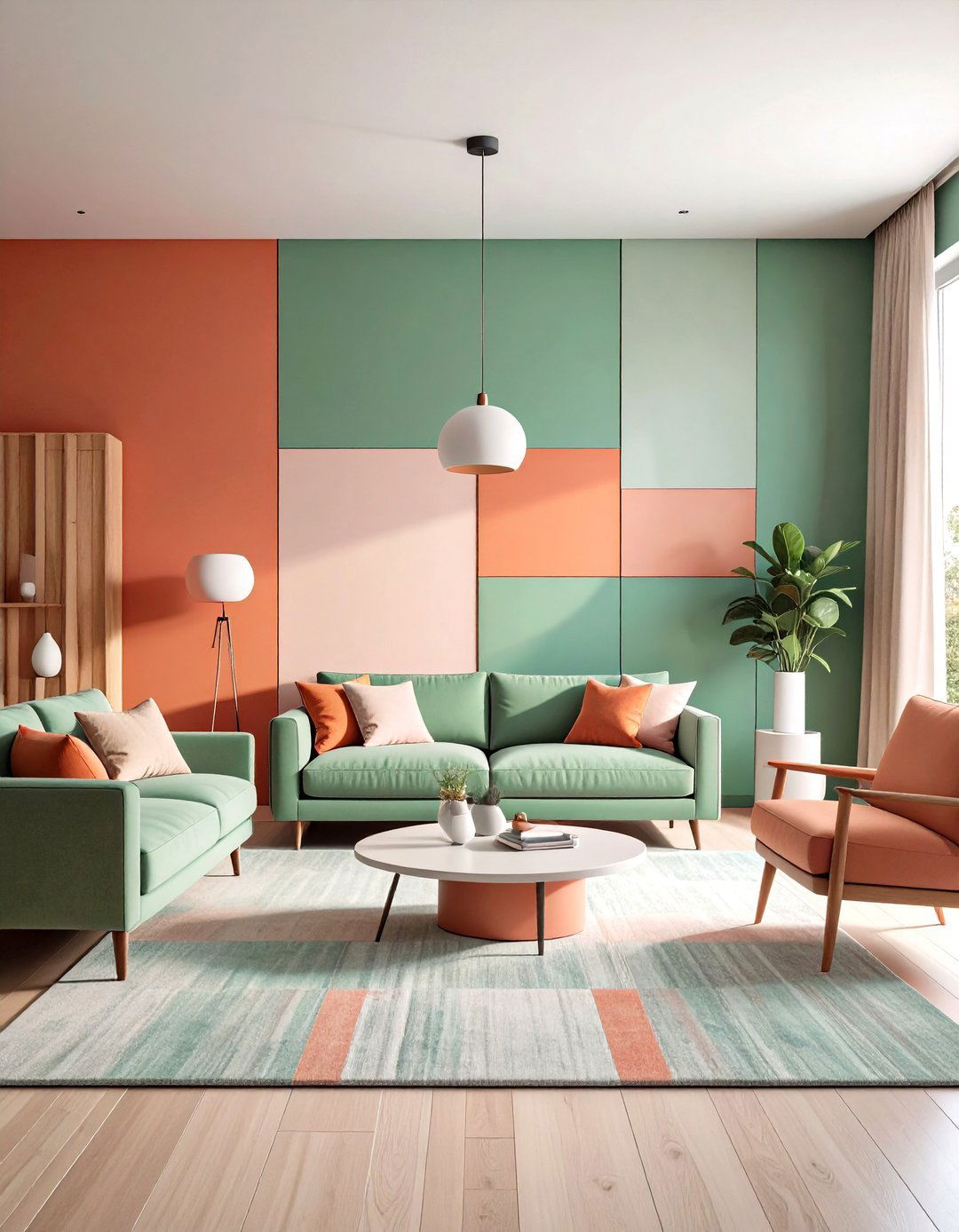
Experiment with color blocking by pairing sage green with complementary hues—such as muted blush or soft terracotta—on adjacent walls or through area rugs and upholstery. This playful technique modernizes the space and highlights sage green’s versatility alongside warm accents.
12. Sage Green and Black Modern Touches
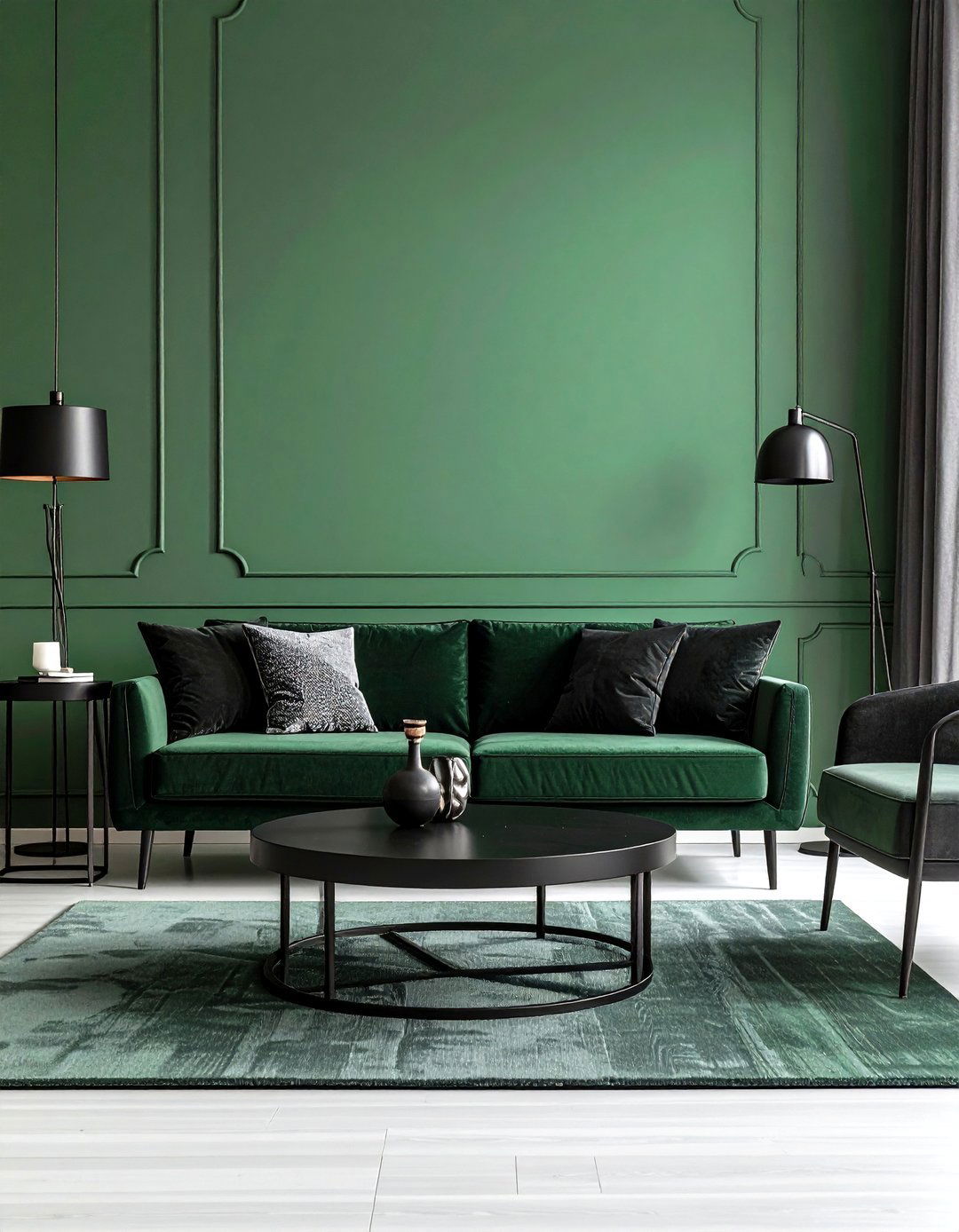
Anchor your sage green walls or furniture with black metal fixtures, picture frames, or a sleek black coffee table. The dark accents introduce contrast and a contemporary edge, ensuring the overall design remains crisp and modern.
13. Vintage-Inspired Sage Green Decor
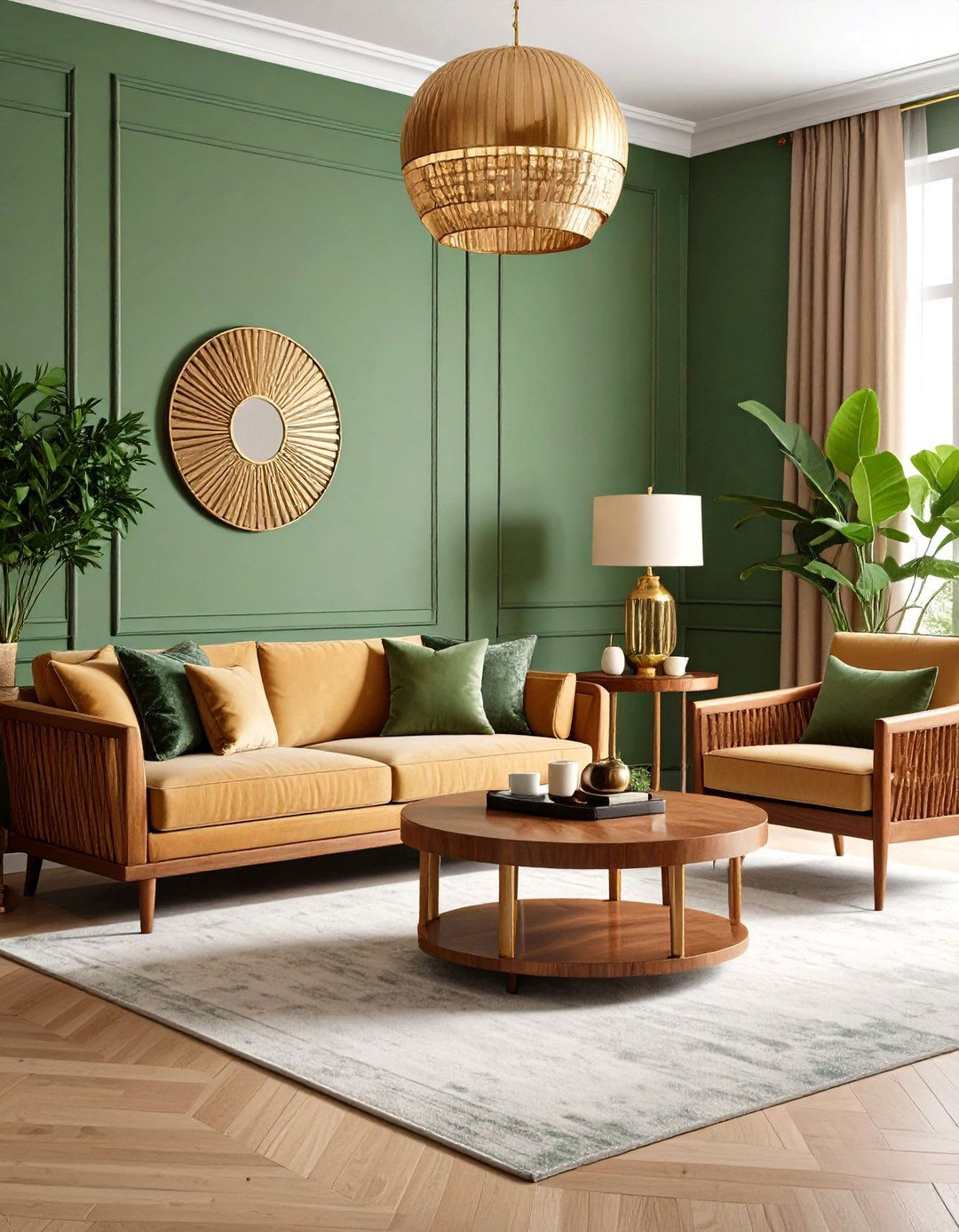
Incorporate mid-century modern or Art Deco furniture pieces in warm woods and brass, set against sage green backgrounds. A vintage credenza or geometric mirror can transport the room back in time, while the green hue keeps the space feeling fresh and relevant.
14. Textured Fabrics in Sage Green Palette
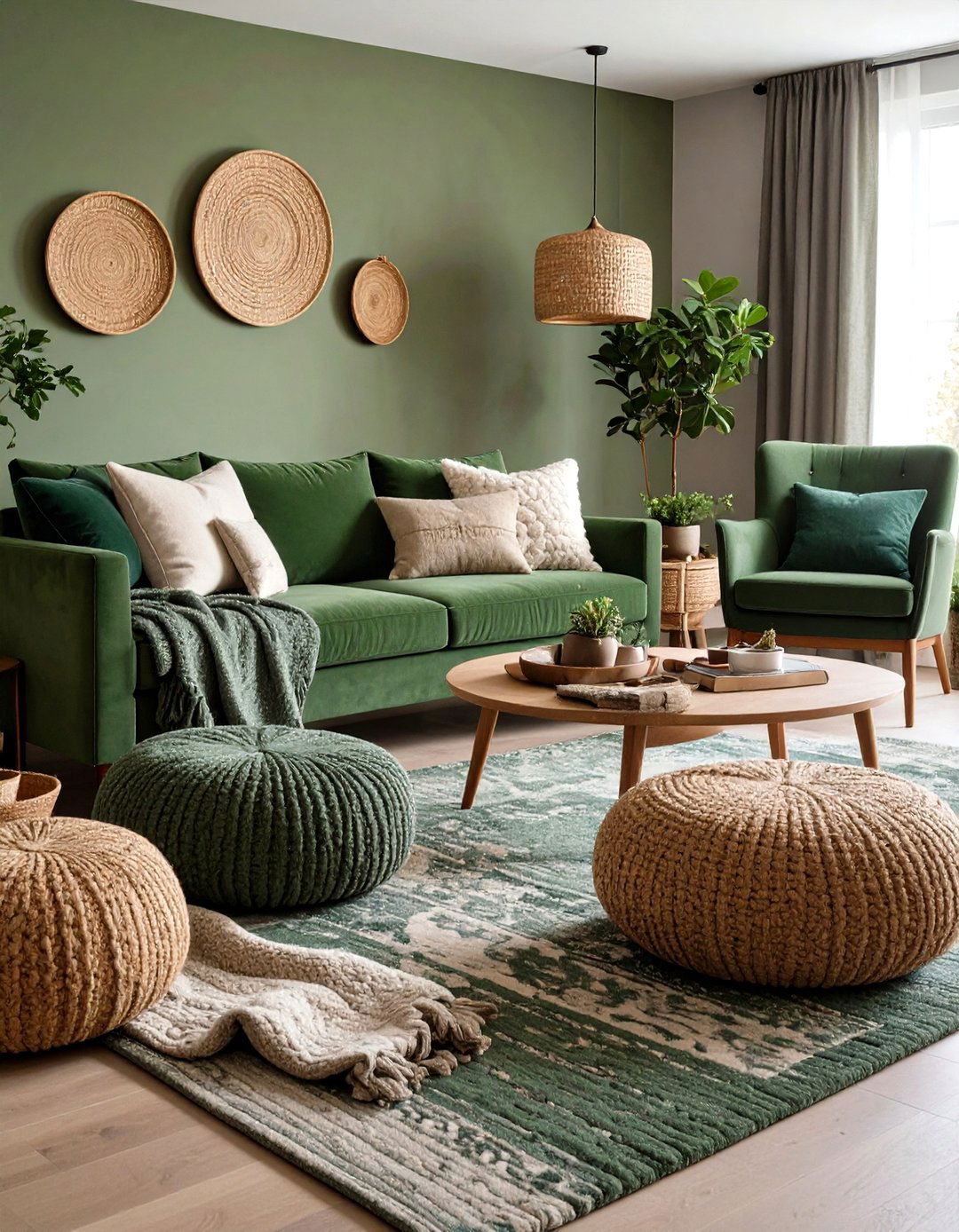
Layer textiles—such as velvet cushions, boucle throws, and woven baskets—in sage coordinates. Textural variety enhances visual interest, making the monochromatic scheme cozy and refined. Don’t shy away from mixing plush and rough-hewn finishes to capture depth.
15. Sage Green Accent Furniture
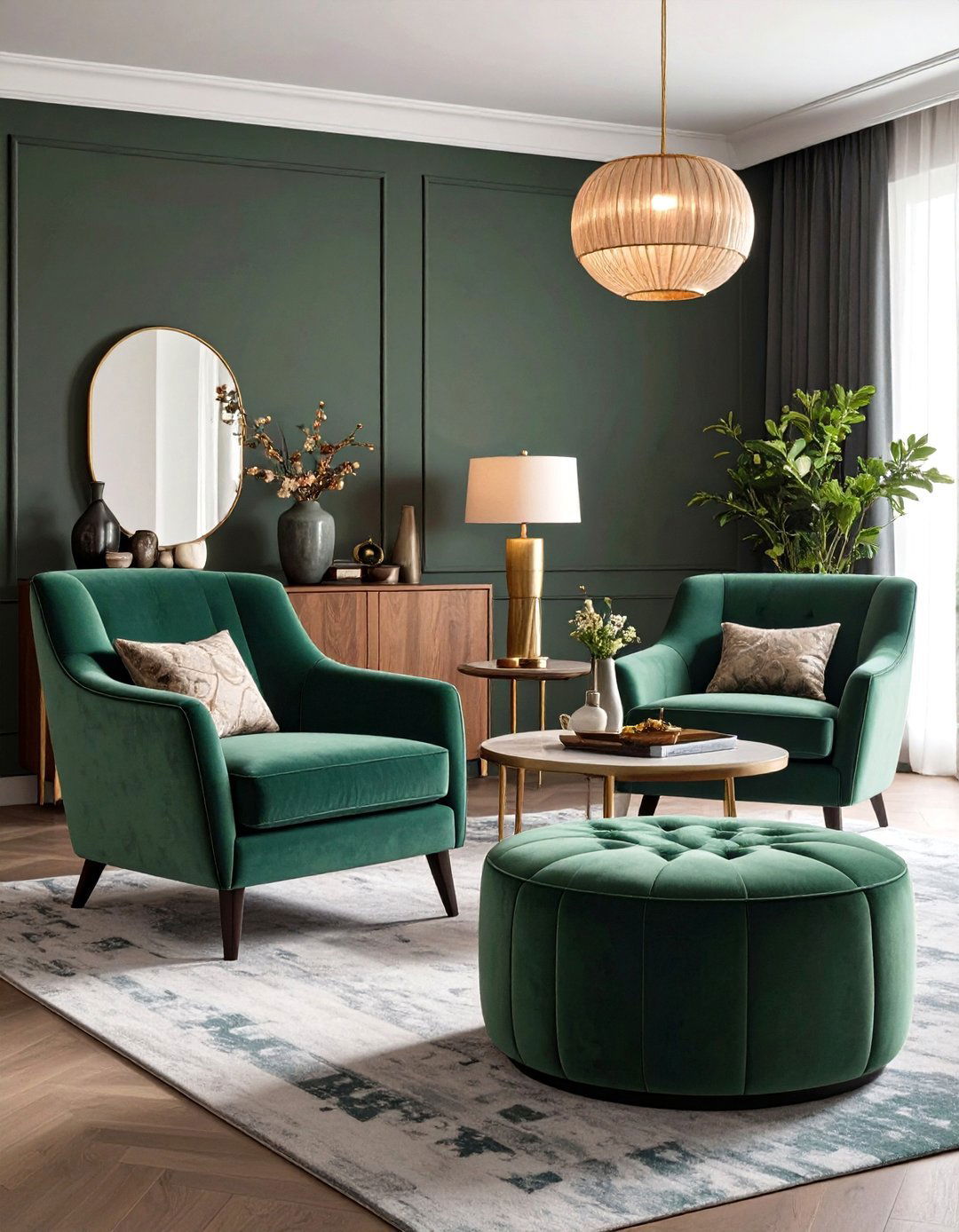
Rather than committing to a full paint job, introduce sage green through furniture pieces: think a velvet armchair, a painted console table, or ottomans. This allows flexibility and a pop of color that’s easy to switch out with evolving trends.
16. Sage Green Ceiling for a Bold Twist
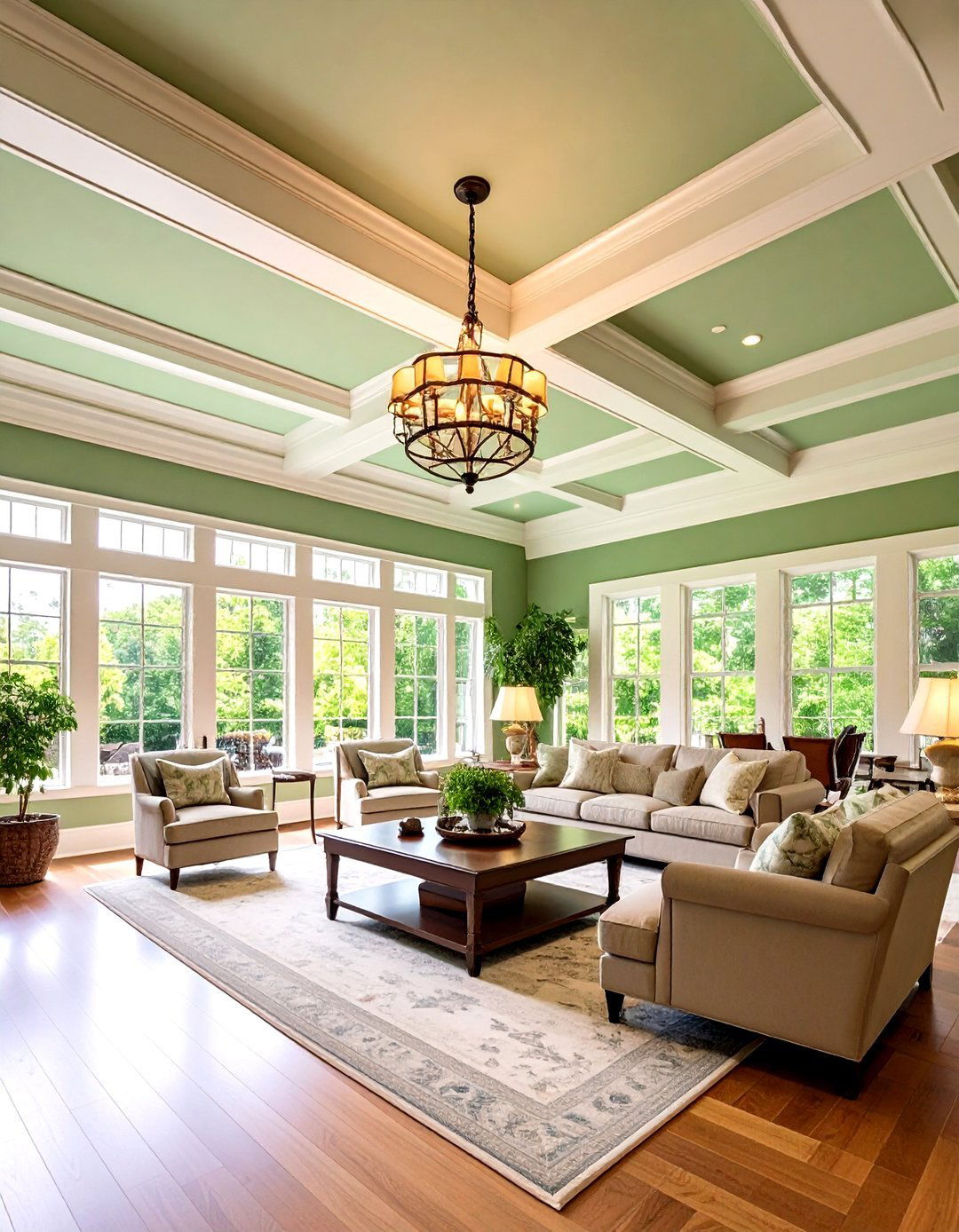
Make an unexpected design choice by painting the ceiling sage green. This technique draws the eye upward, creating an intimate, enveloping atmosphere and working especially well in rooms with high ceilings or dramatic crown molding.
17. Monochromatic Layering of Sage Tones
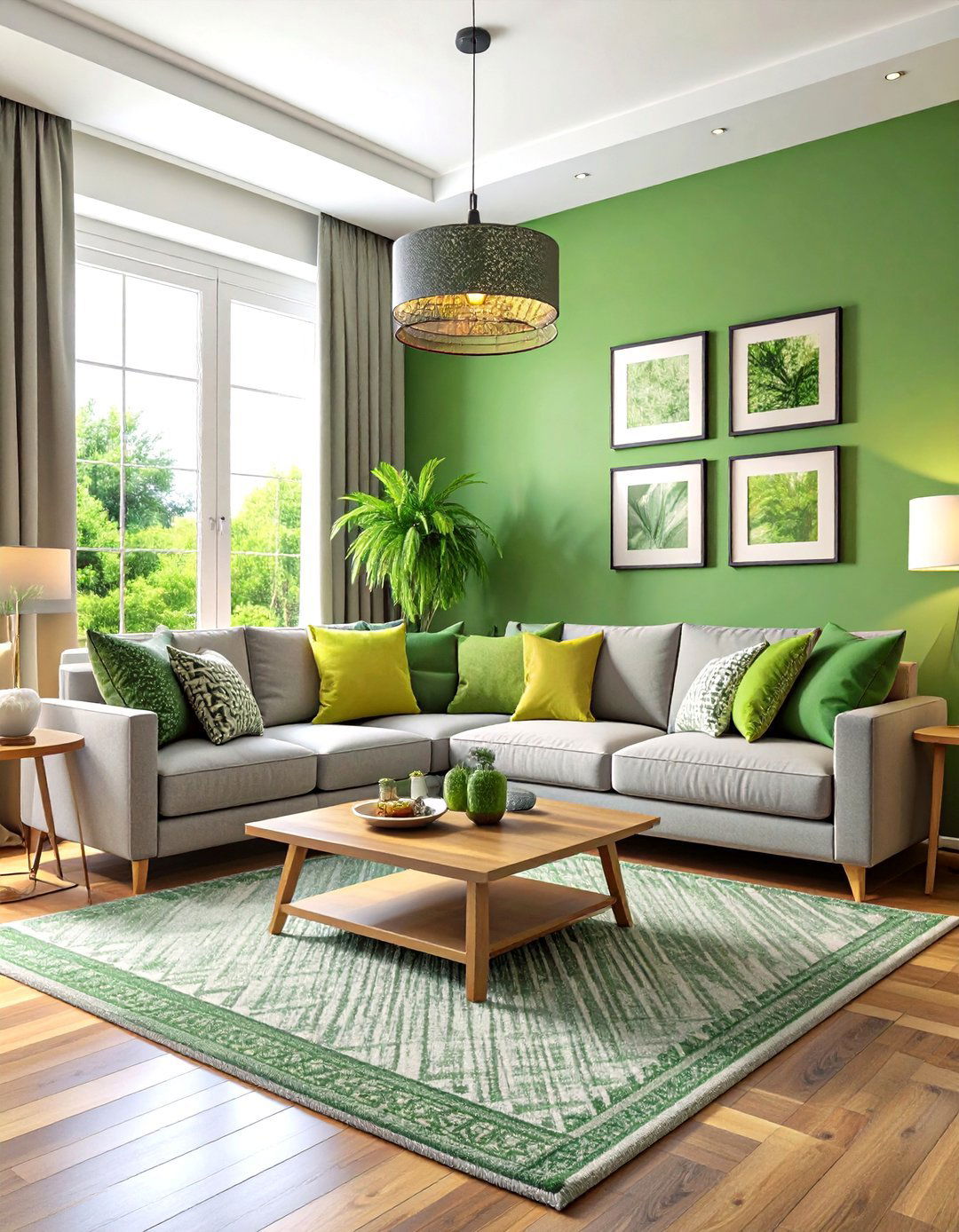
Combine multiple shades of green—from pale mint to deeper olive—through rugs, pillows, and wall art over a sage backdrop. This layered approach feels dynamic yet cohesive, allowing each piece to stand out while belonging to a unified palette.
18. Sage Green and Deep Jewel Tones
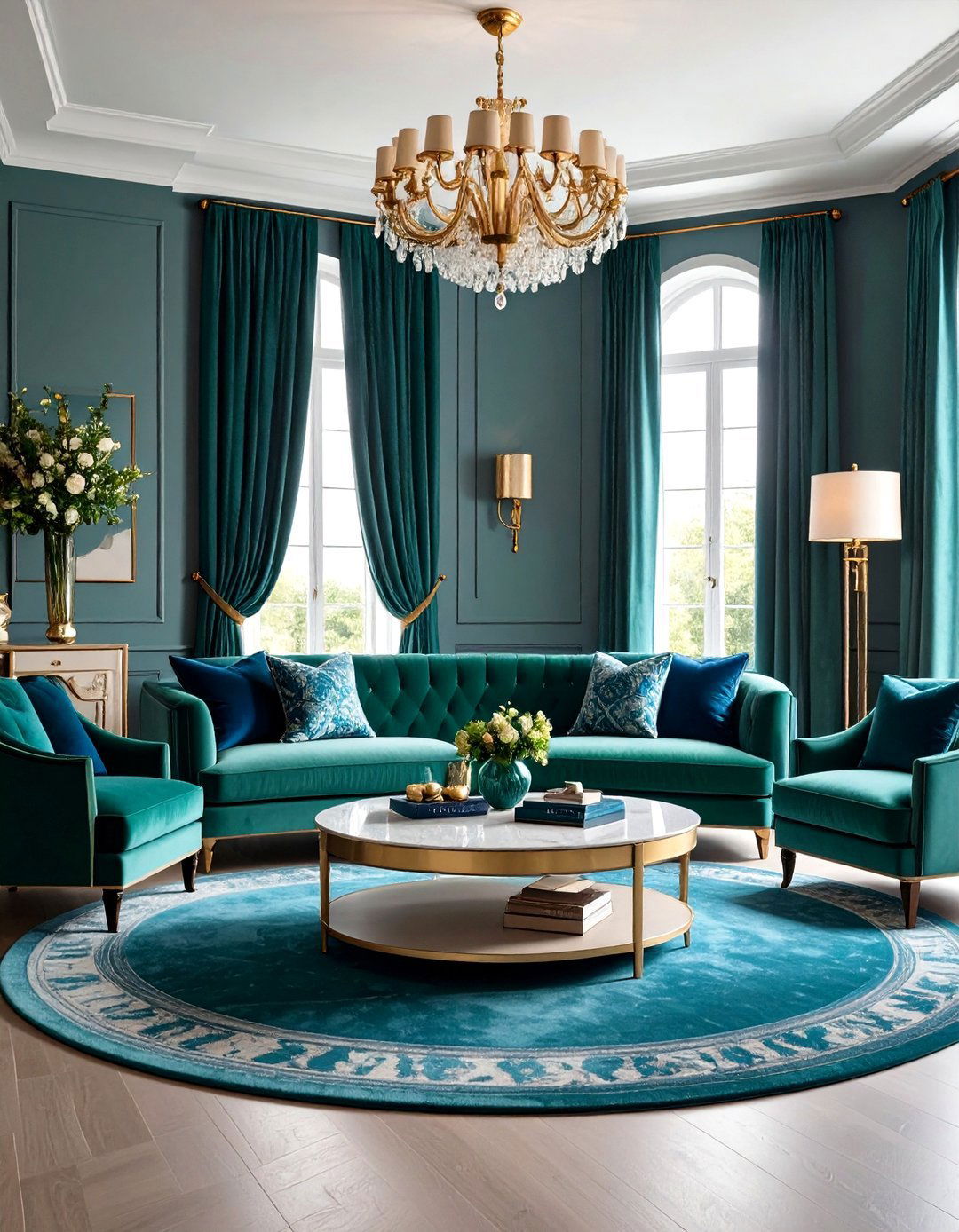
For a luxurious touch, pair sage green with rich jewel tones like emerald, sapphire, or amethyst in accent pillows, curtains, or artwork. These saturated hues play off sage’s subdued palette, adding drama and a sense of opulence.
19. Sage Green with Metallic Wallpaper
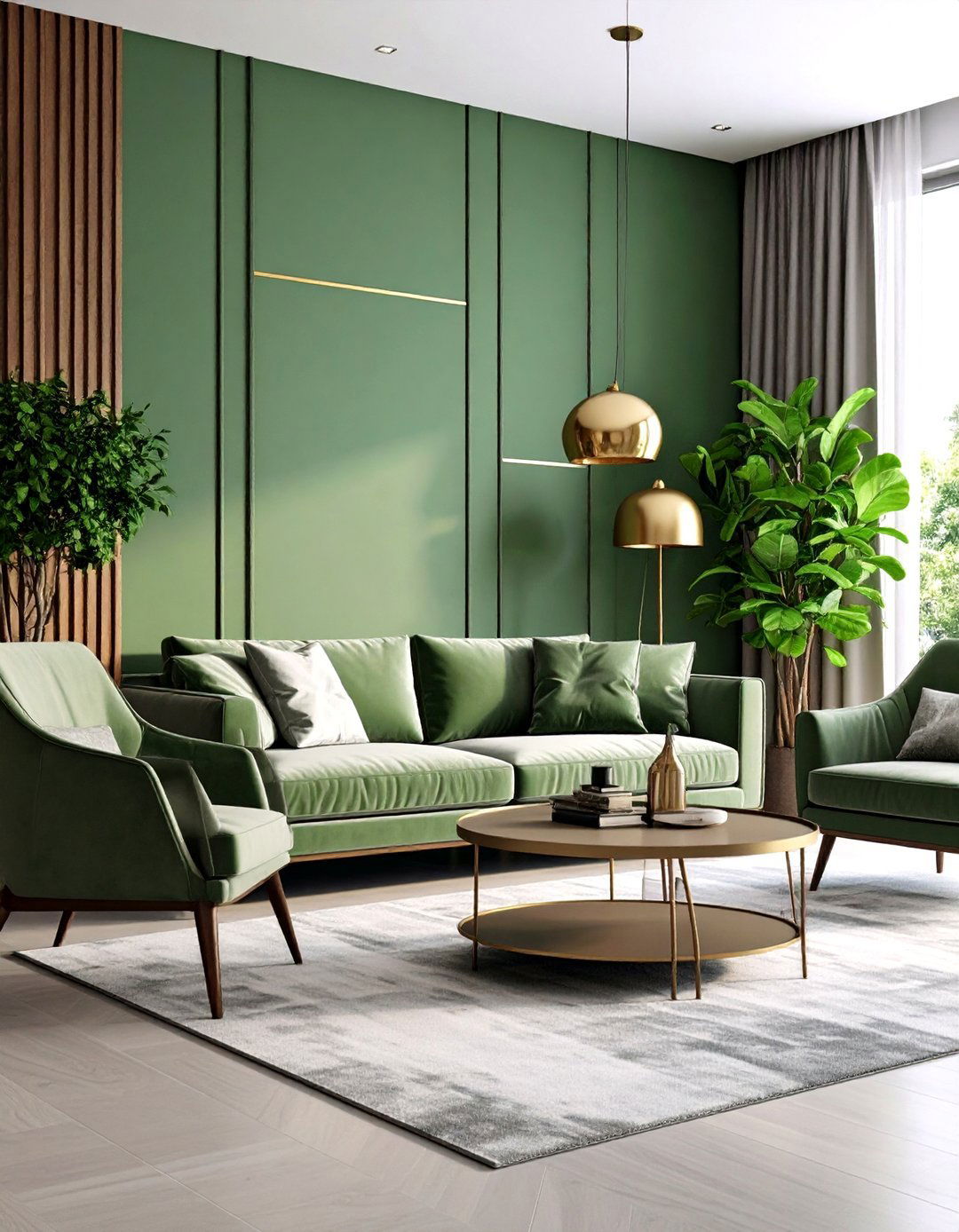
Choose a wallpaper with a metallic or pearlescent finish featuring sage green motifs. Applied to a feature wall, it adds subtle shimmer and pattern, enhancing light reflection and creating depth without overwhelming the room.
20. Outdoor-Inspired Sage Green Indoor Garden Corner
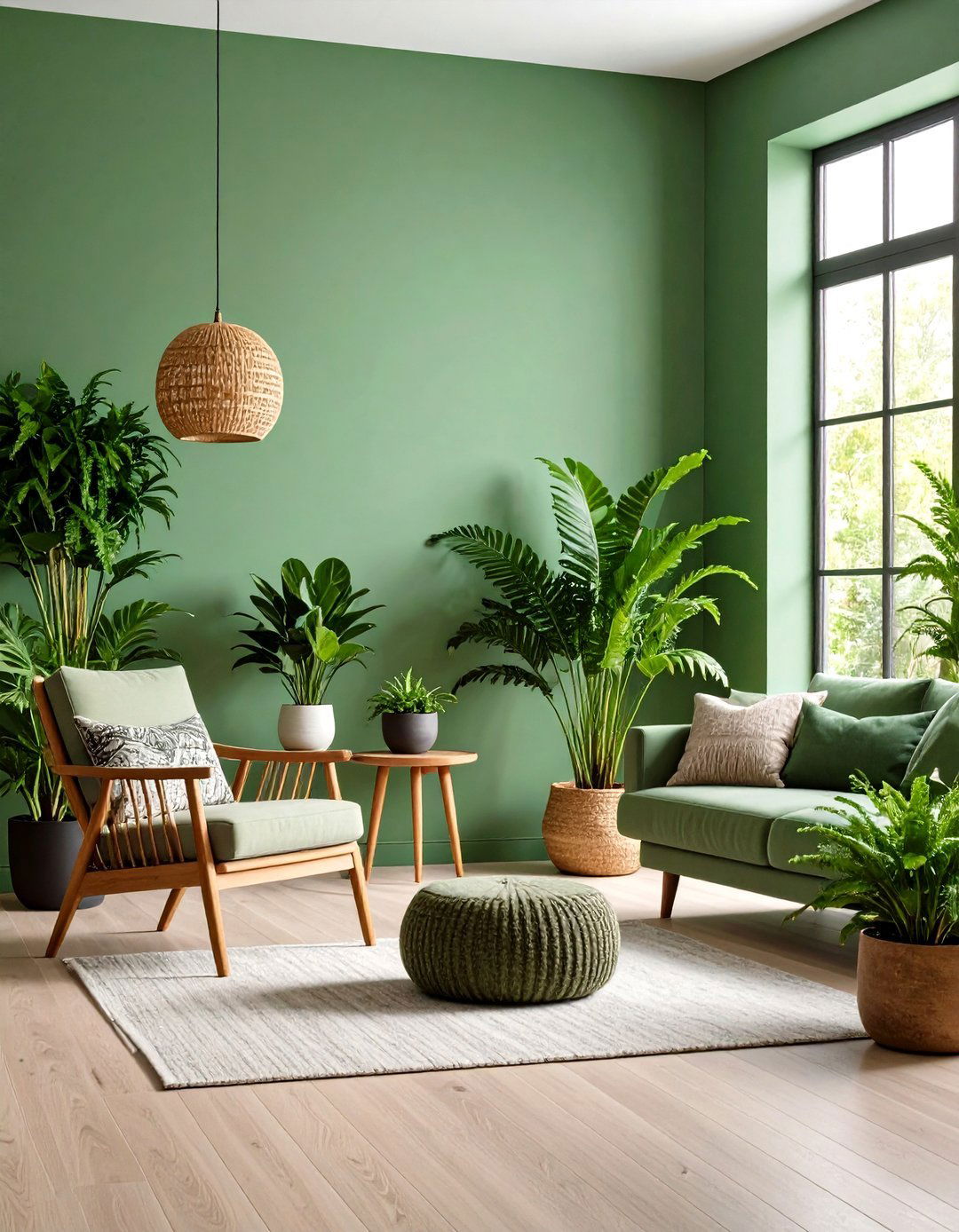
Dedicate a corner to potted plants—ferns, philodendrons, and succulents—against sage green walls. The tonal harmony between paint and foliage brings the outdoors in, crafting a tranquil nook perfect for reading or relaxation.
Conclusion:
Sage green in the living room evokes serenity, versatility, and enduring style. Whether through walls, furniture, or accents, this muted hue harmonizes with natural materials, metallics, and complementary colors to suit diverse aesthetics—from minimalist to maximalist. By experimenting with textures, finishes, and unexpected placements like ceilings or built-ins, you can create a space that feels both restful and refined. Embrace sage green’s gentle strength to transform your living area into an inviting retreat that endures beyond fleeting trends.


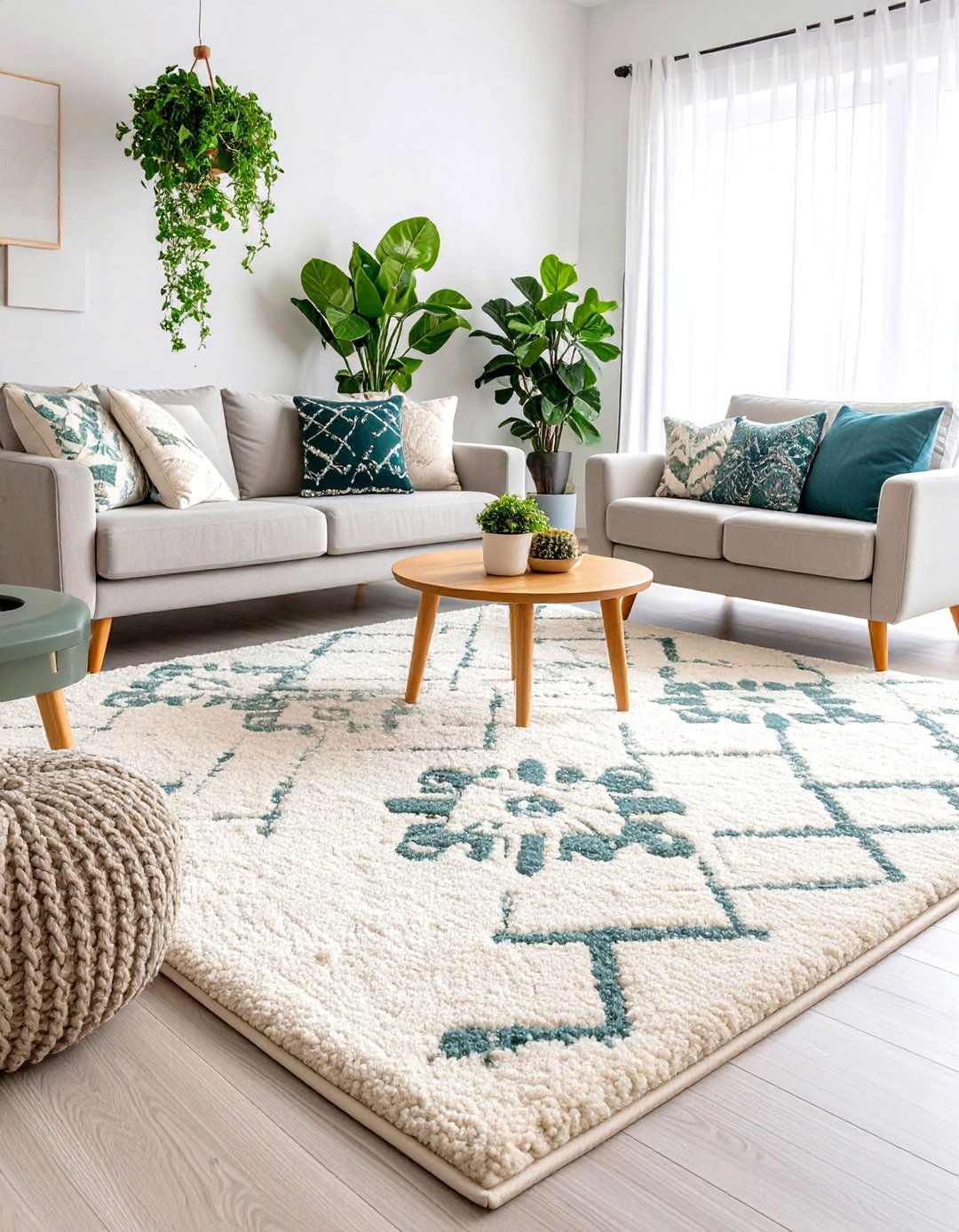
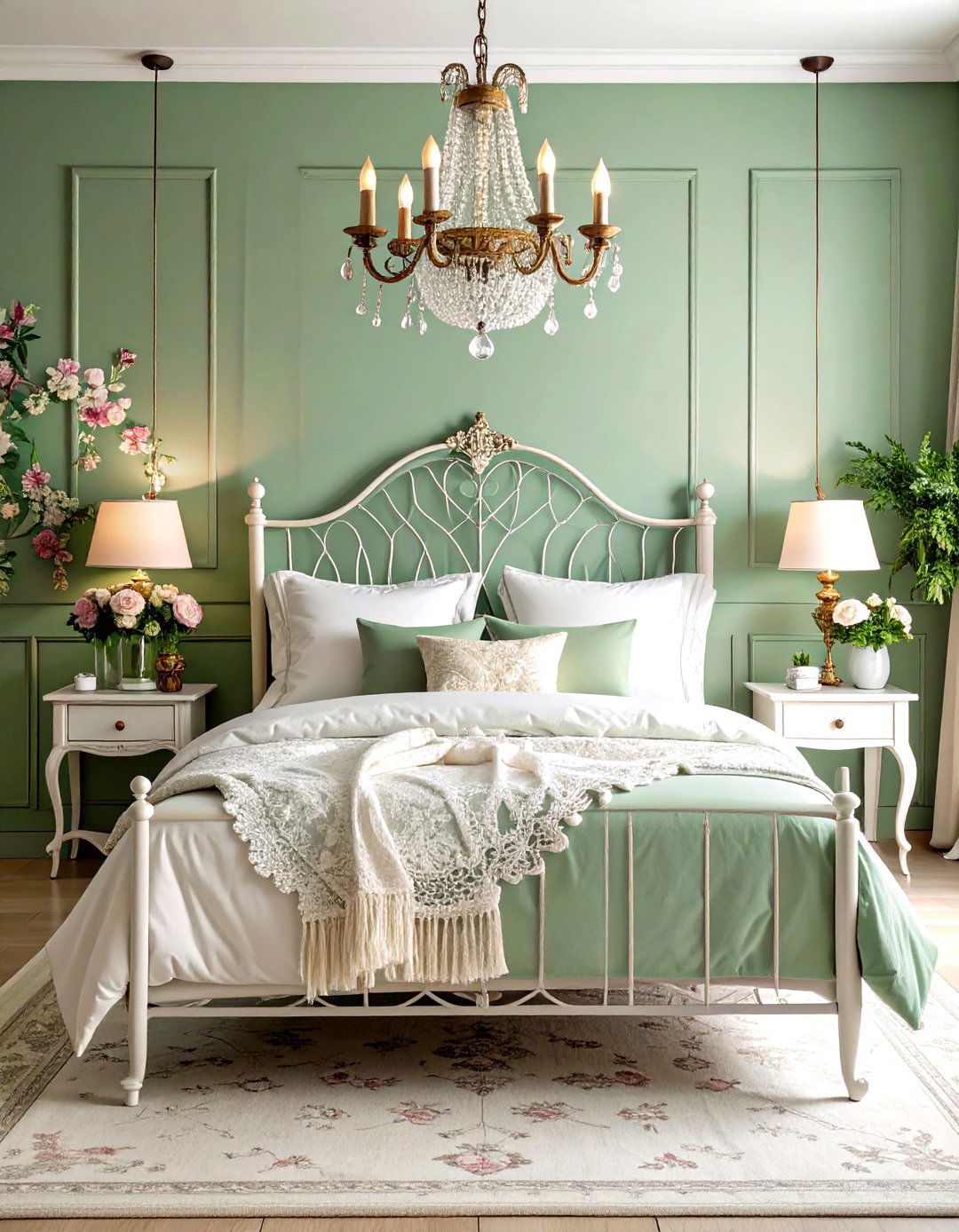
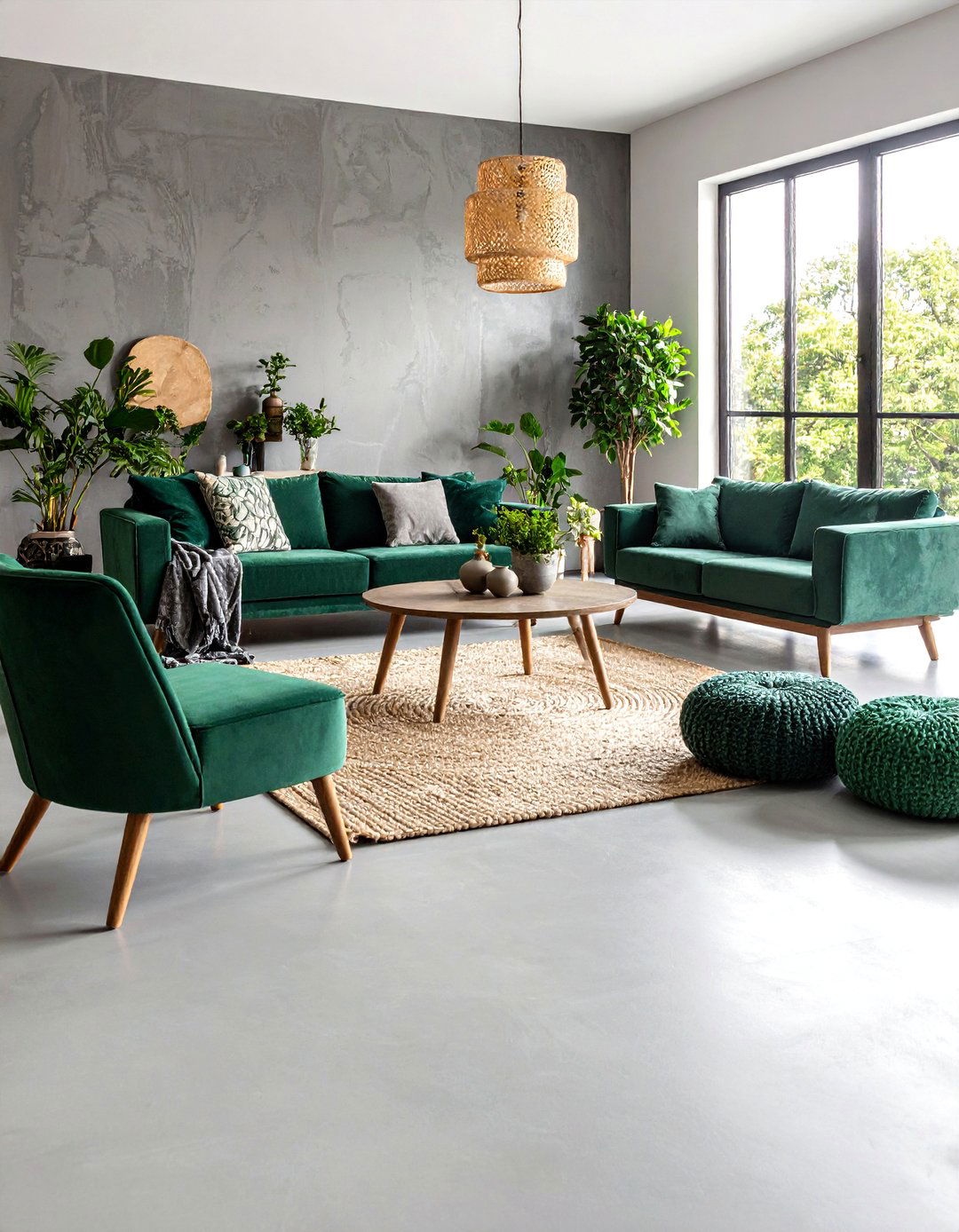
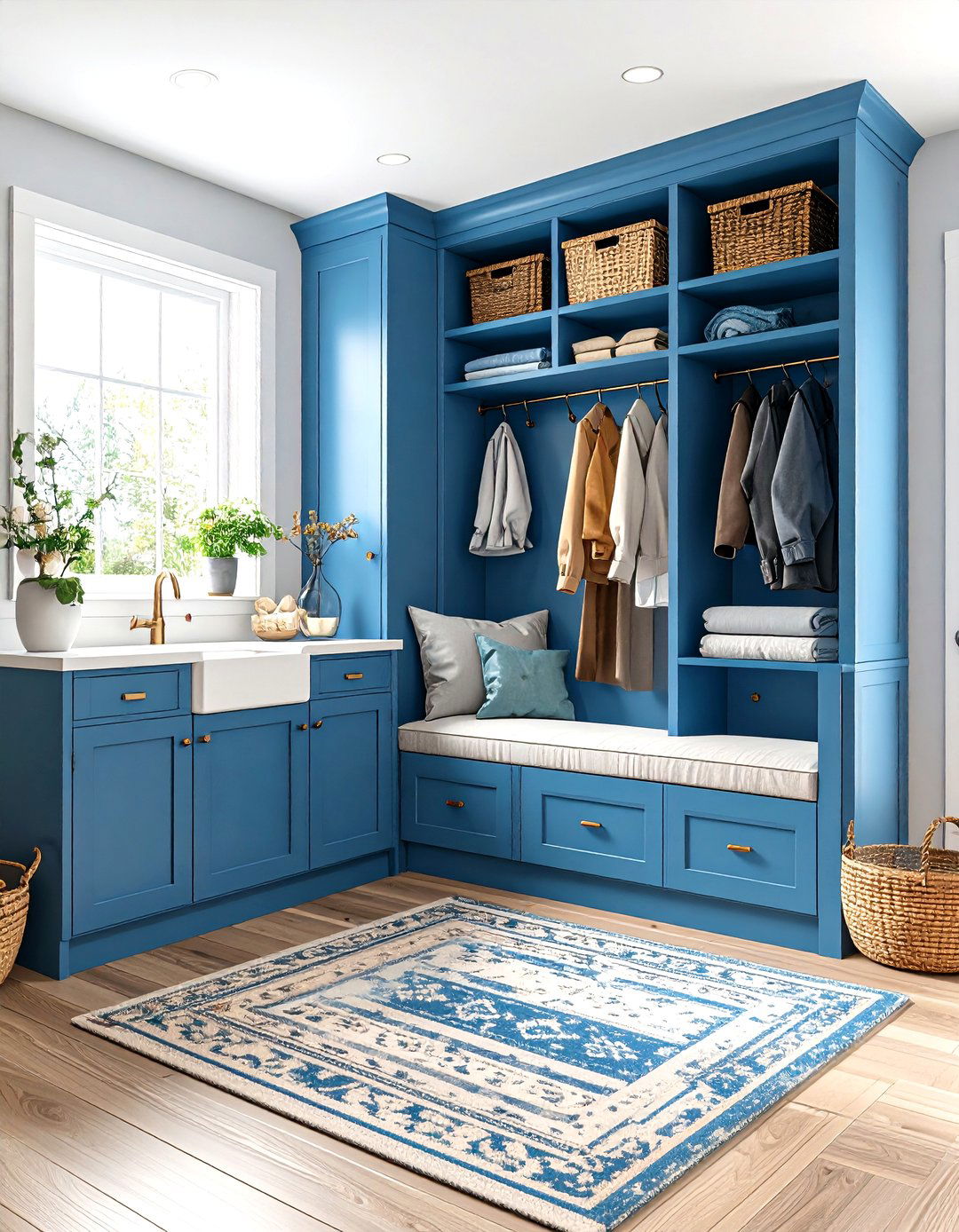

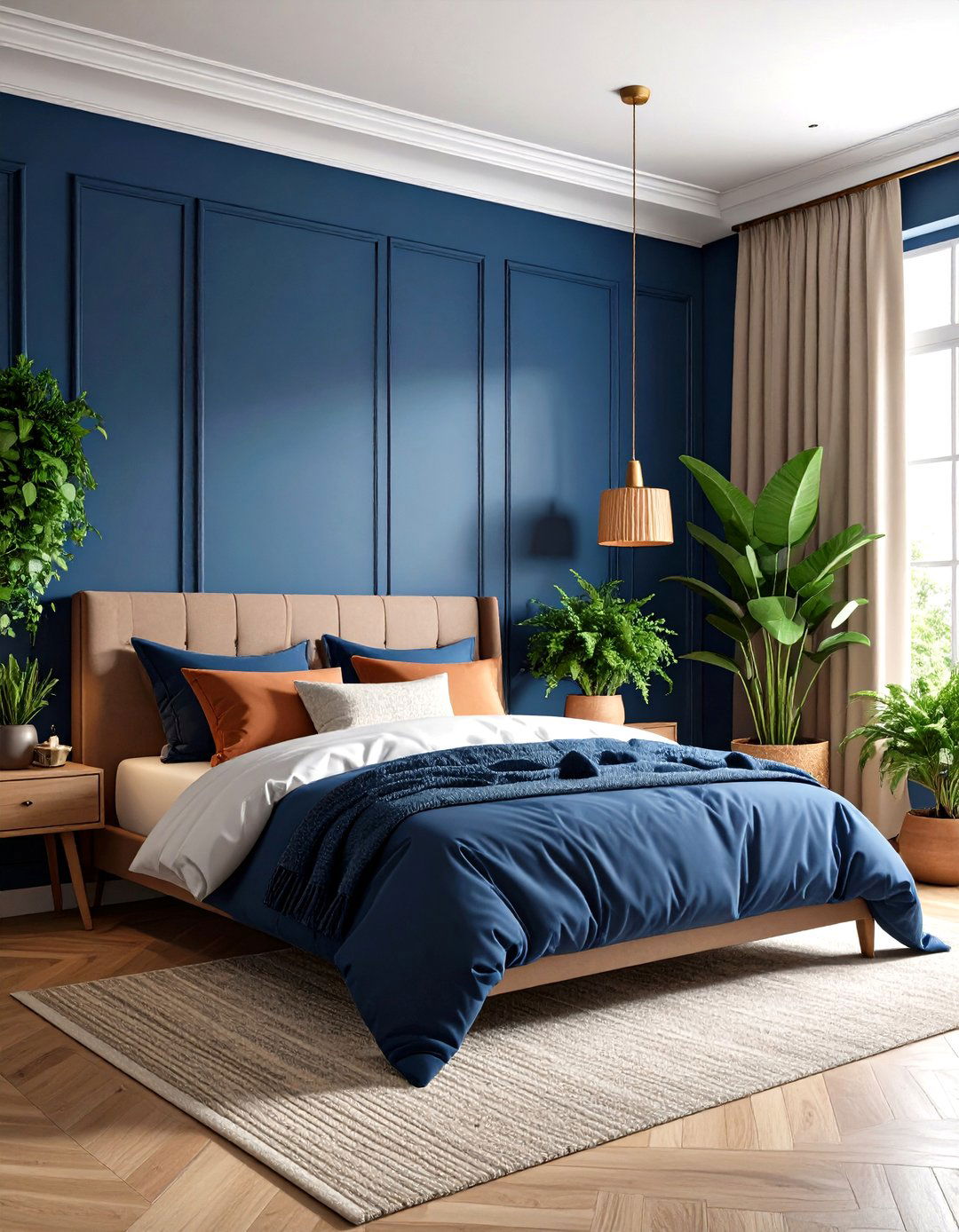
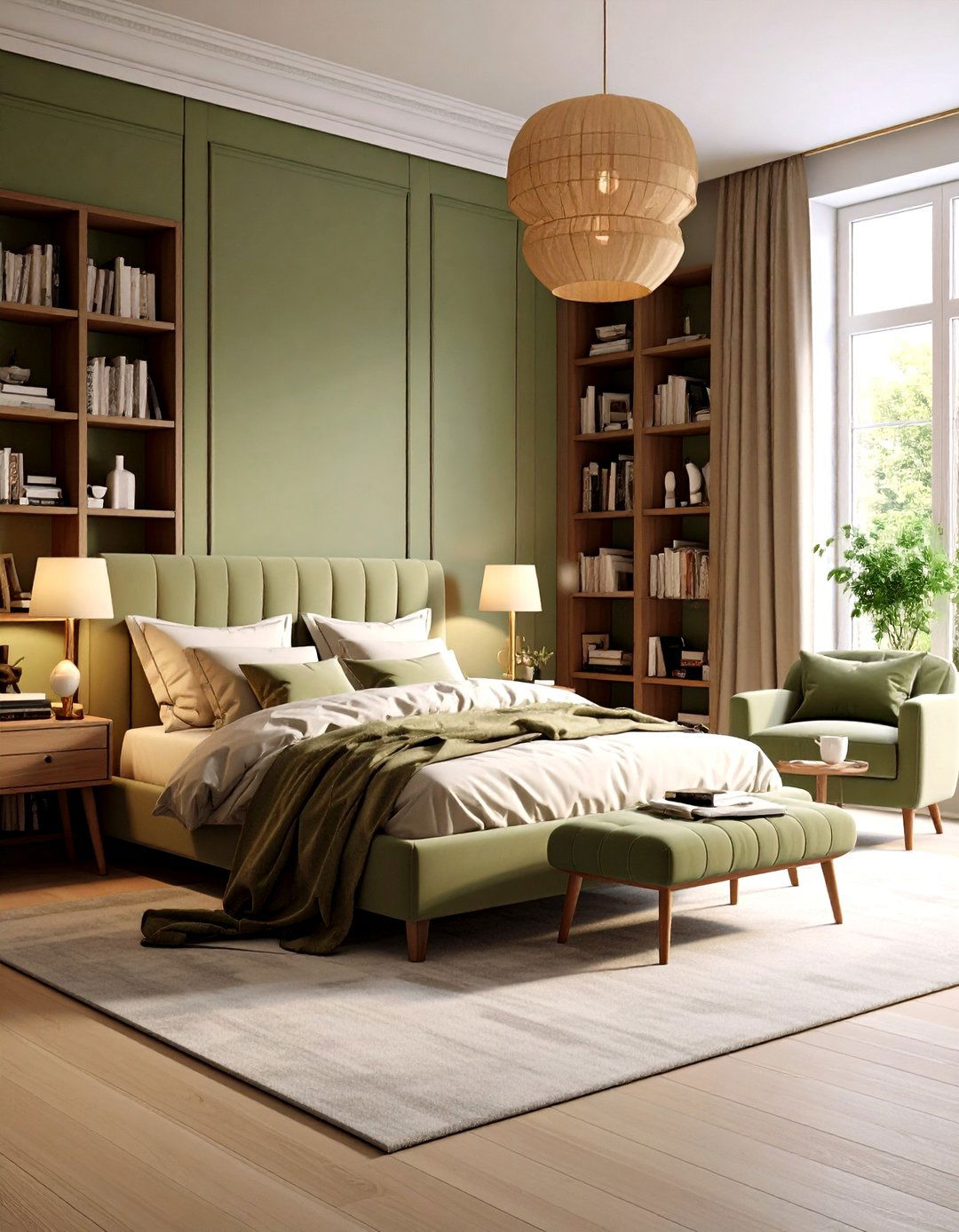
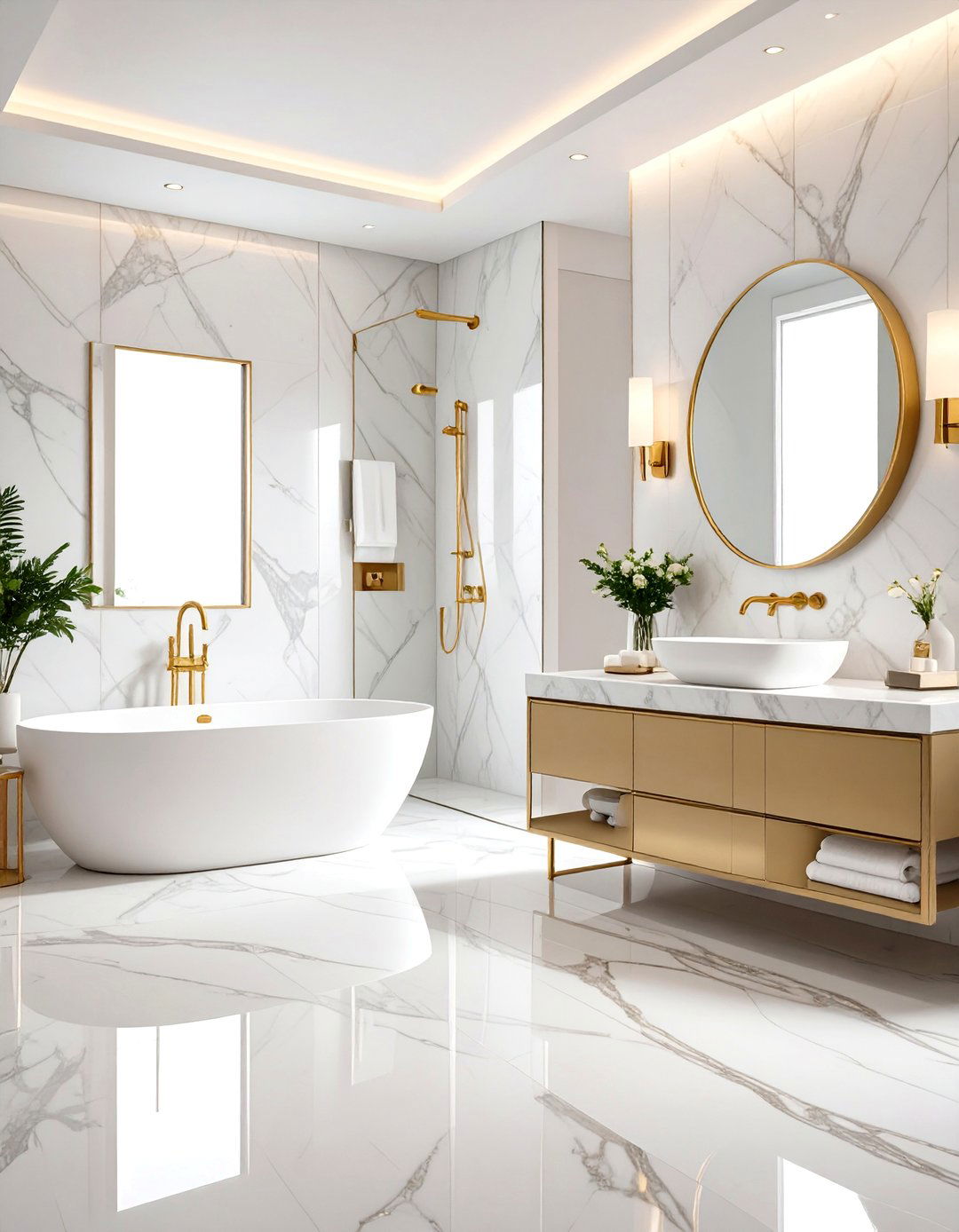
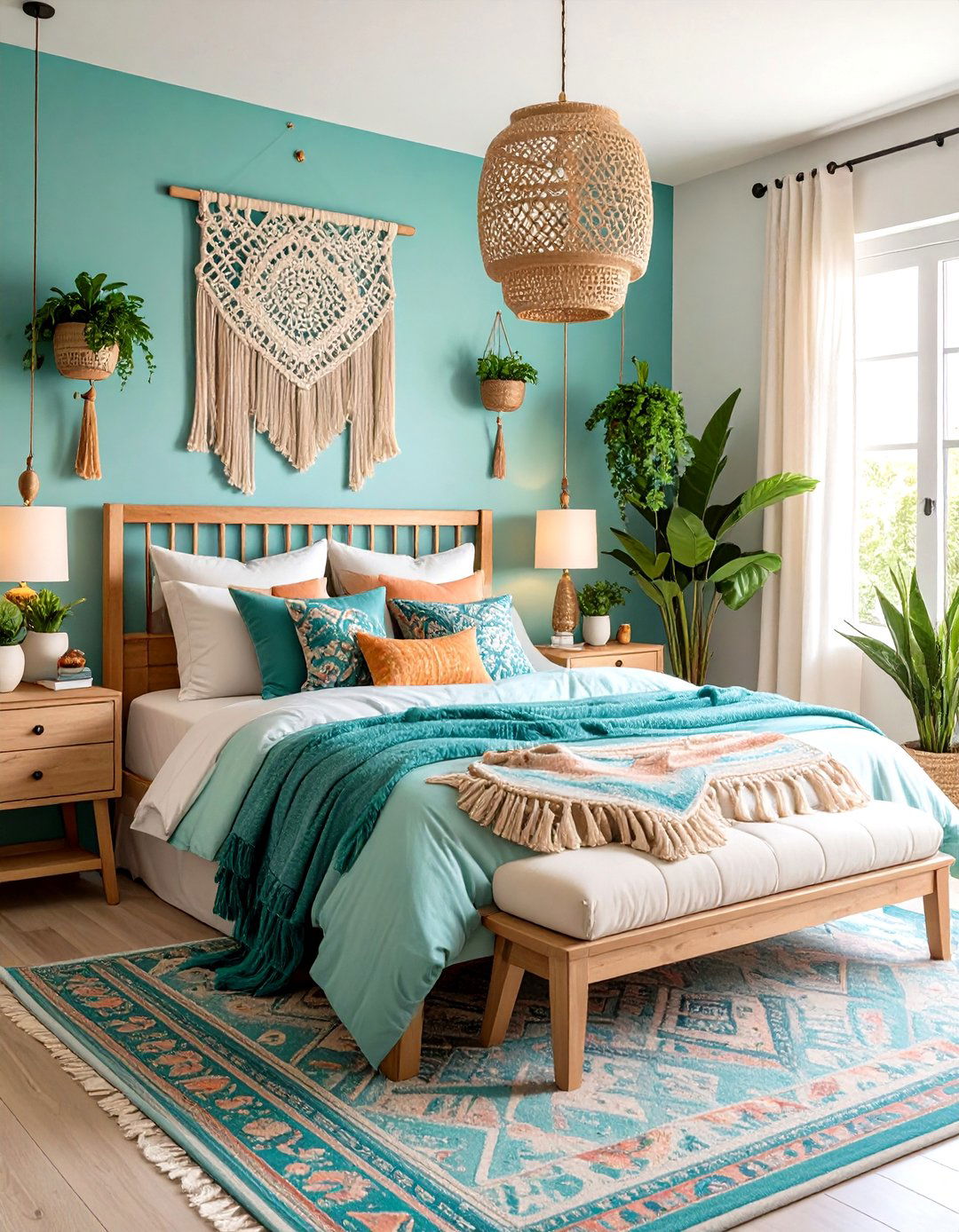
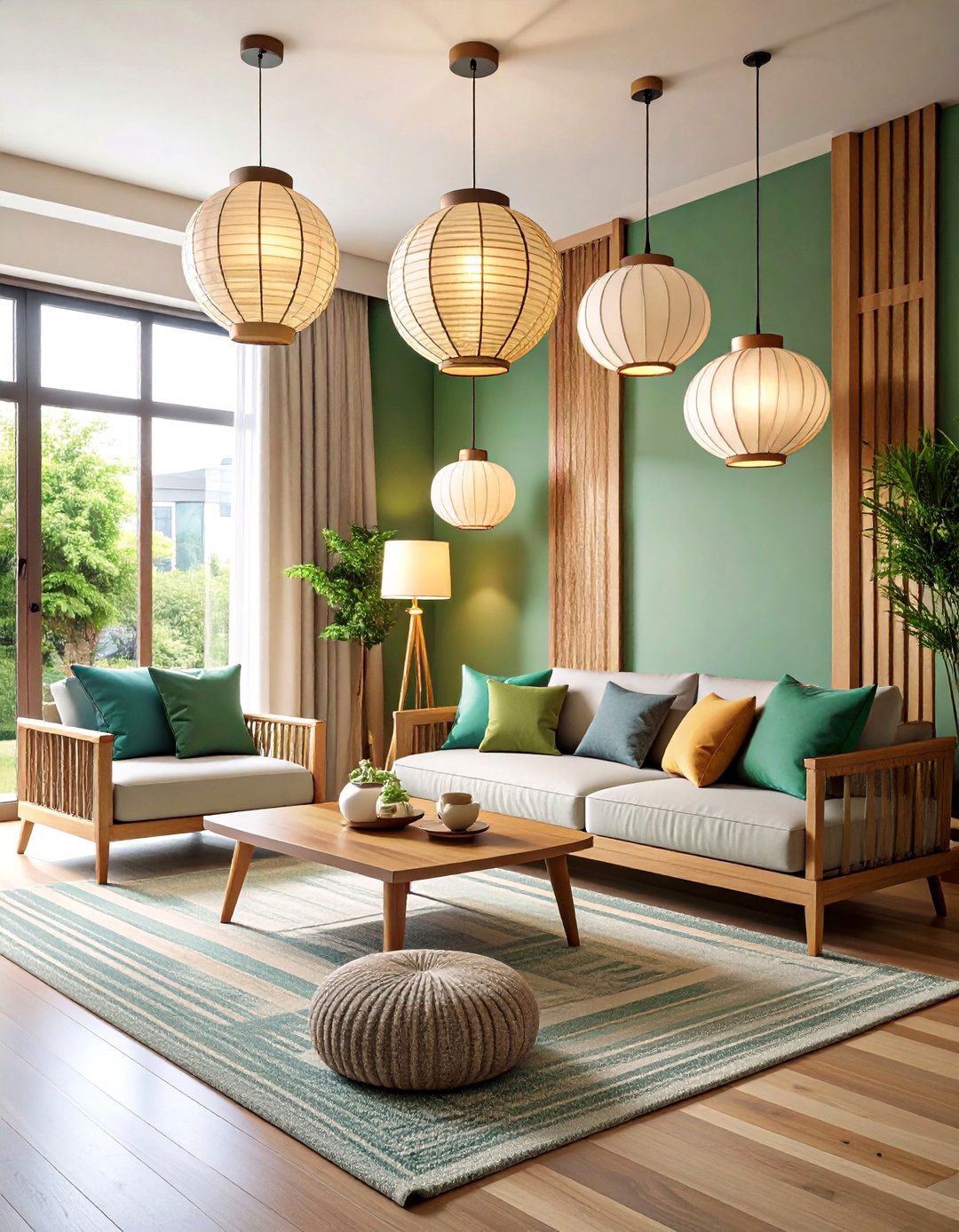
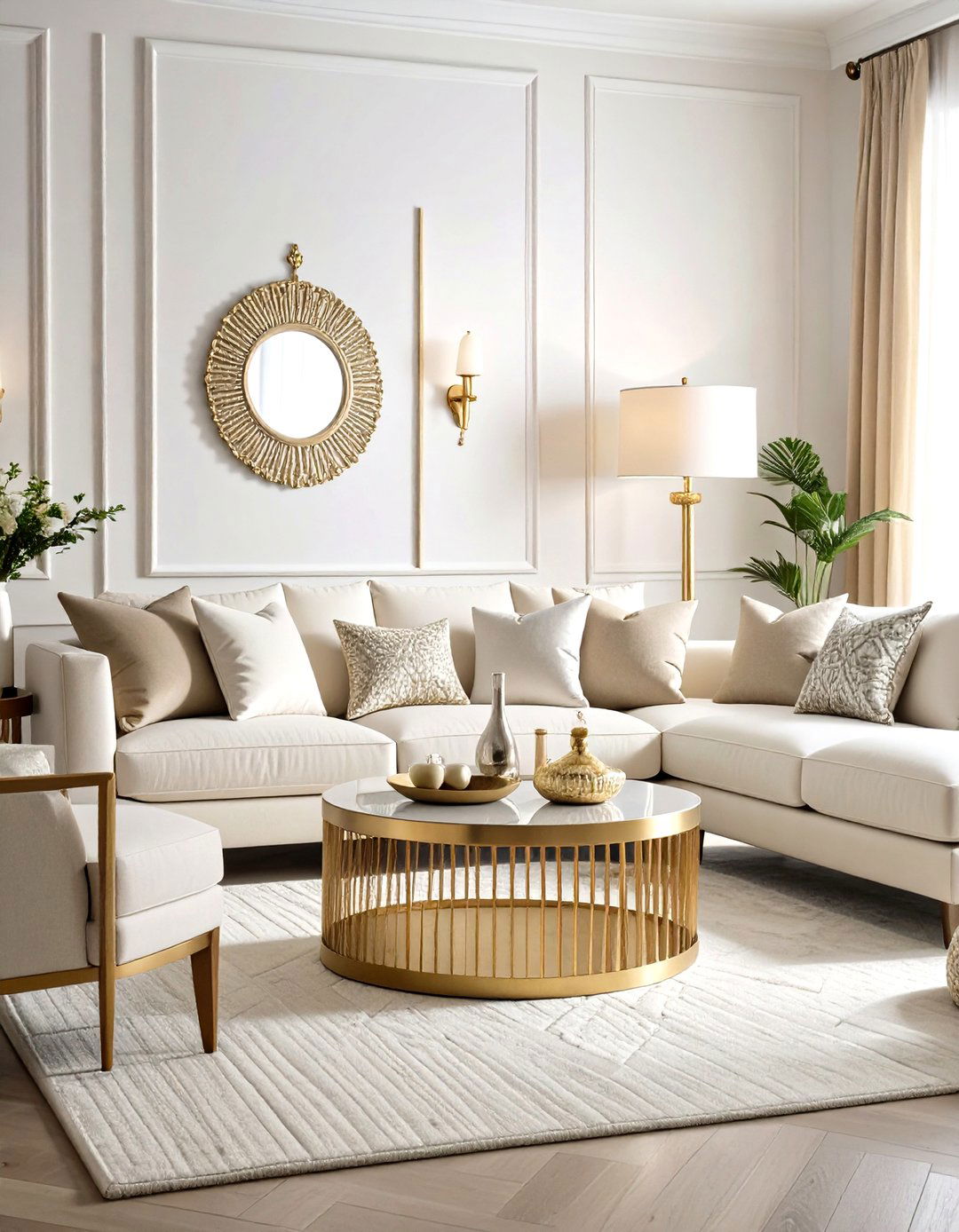
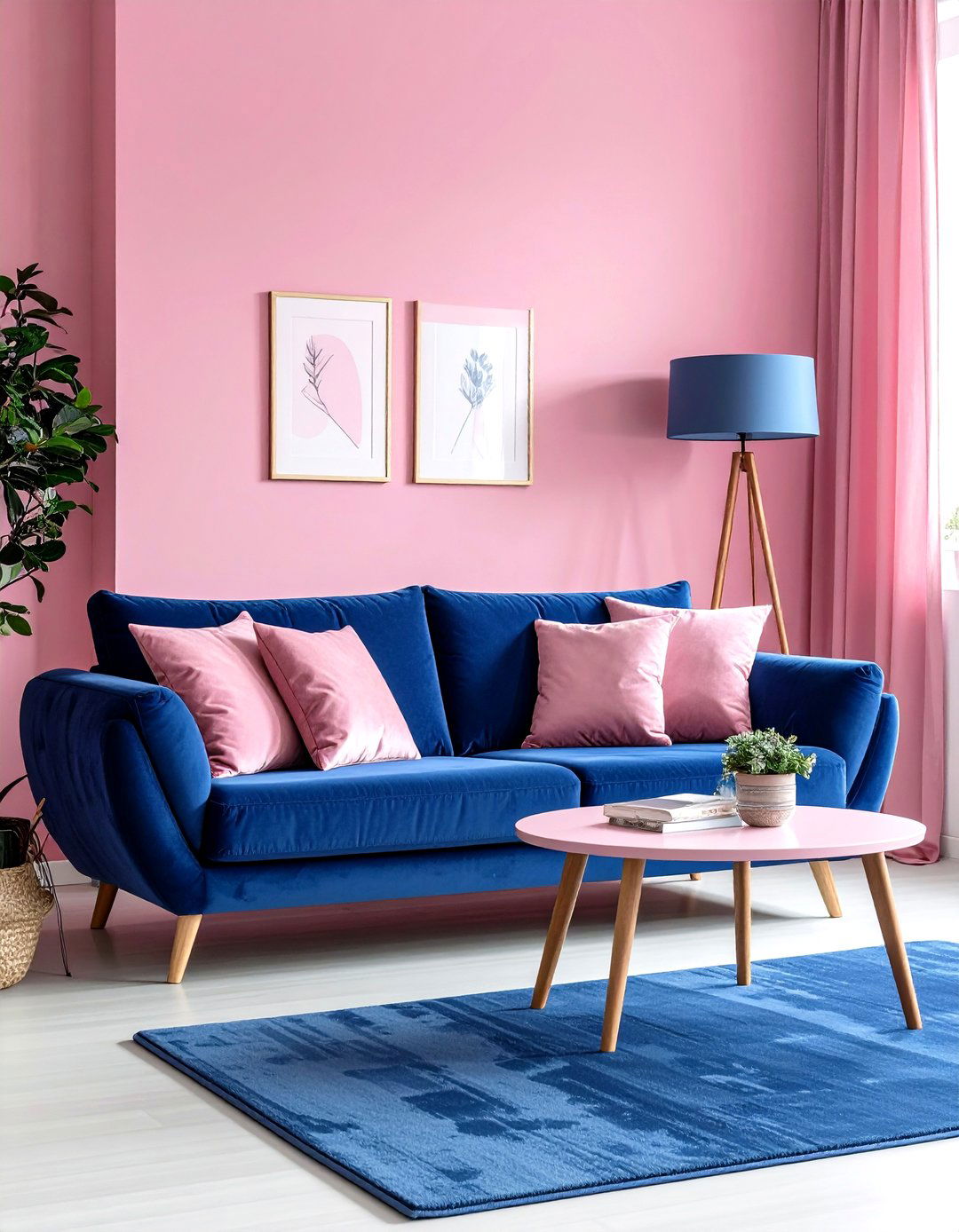
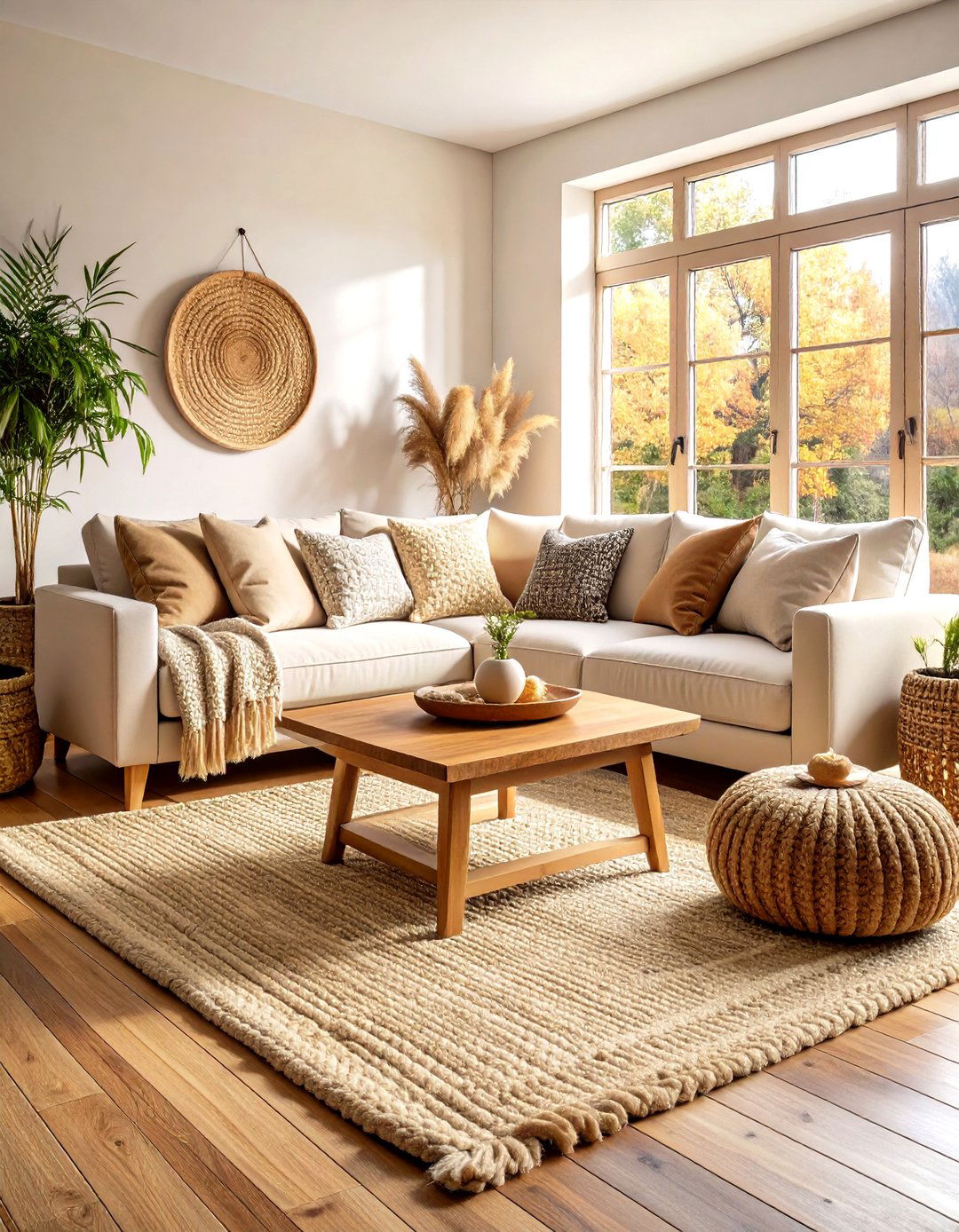
Leave a Reply